on Vimeo.
We are getting ready for the festive season with a real treat in Belgrade. Here in Serbia the Human Cities partners are the Belgrade Design Week and they have gathered local partners around a table to discuss public space city wide.
The scope is ambitious and in a city intimidating loaded and layered with history, it is not going to be simple. But what worth doing ever was?
Keep your ears to the ground, 2016 will bring the rumbles to Belgrade and the humans to the city!
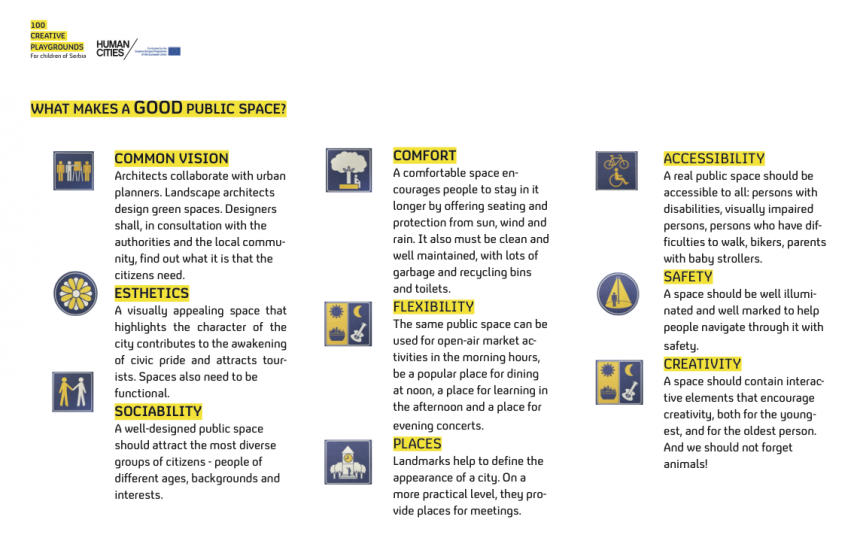
WORK METHODOLOGY ACCORDING TO THE PRINCIPLES OF JAN GEHL
The unique methodology of Jan Gehl Architects is based on the principle that people are the most important priority of public space in the process of planning cities. Public space should be a place for everyone that includes unique qualities and benefits of a particular urban environment, open to a variety of activities and opportunities.
We take their principles and formulate a design solution and a strategic plan for the project of the Grand creative park in Kragujevac based on quantitative and qualitative research of social context of space usage and public life in this place at all.
This way, guidelines and strategies for maximizing individual potential and development of the park are based on a comprehensive understanding of the cultural and geographical specificity of Kragujevac and the immediate environment of the park.
SPACE
The area is being designed and developed based on the vision of public life, in order to facilitate and encourage the desired activity. Space can be planned according to the parameters of the desired route, destination, user groups and activities as part of a vision. The space should be designed to create new values and to make best use of the existing ones. Our solution starts with the formulation of the vision and the comprehensive program of activities based on the type of life activities and attractions that are inherent in this area. The next step is to develop a network of public spaces that can support the vision of public life through the conditions, form and climate.
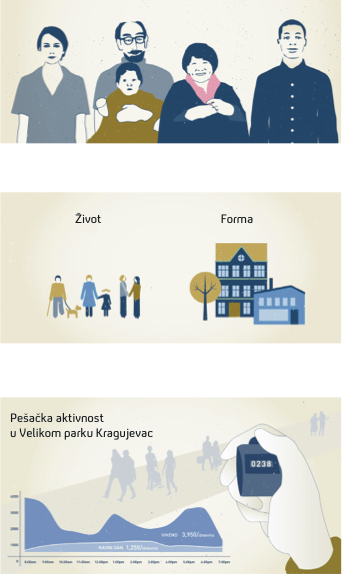
REVERSE THE PROCESS
The main idea is that the use of public space is a key factor in the quality of life in urban areas. The usual methodology of planning, which focuses on traffic and buildings, must be turned back so that people and users become more visible in the planning process. In most cases, the beginning of the creation is a vision of beautiful objects, which creates the “overshadowing factor”, around which is free space. There remains hope that the rest of the space will come to life.
This approach leaves to chance the most important aspects that make the city dynamic, safe and attractive. By applying the Gehl methodology, we will work to establish a different path of thinking: humans first, then the environment tailored to their needs.
PEOPLE
The basis of planning has to be a vision of public life in the given area. Who are its potential users? What activities would take place in it? What kind of life can develop there?
The strategic guidelines of Gehl Architects were selected and applied in the context of studies, workshops, public consultations, lectures and conferences.
‘’The road to creating successful spaces begins with putting people first”.
To ensure that the reconstructed park has a dynamic public life and in order to avoid the most common mistakes of modern urban planning, we will apply methods of work entitled Life / Property / Building by the consulting firm Gehl Architects.
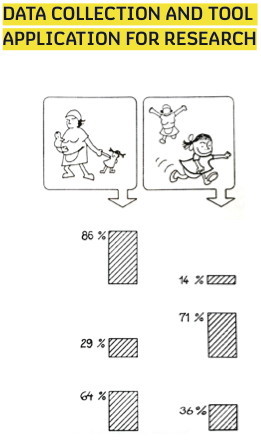
COUNTING
Counting is a widely used tool in public life studies. In principle, everything can be counted, which provides numbers for making comparisons before and after, between different geographic areas or over time.
MAPPING
Activities, people, places for staying and much more can be plotted in, that is, drawn as symbols on a plan of an area being studied to mark the number and type of activities and where they take place. This is also called behavioral mapping.
TRACING
People’s movements inside or crossing a limited space can be drawn as lines of movements on a plan of the area being studied.
TRACKING
In order to observe people’s movements over a large area or for a longer time, observers can discreetly follow people without their knowing it or follow someone who knows and agrees to be followed and observed. This is also called shadowing.
LOOKING FOR TRACES
Human activity often leaves traces such as litter in the streets, dirt patches on grass etc, which provides the observer with information about the city life. These traces can be registered through counting, photographing or mapping.
PHOTOGRAPHING
Photographing is an essential part of public life studies to document situations where urban life and form either interact or fail to interact after initiatives have been taken.
KEEPING A DIARY
Keeping a diary can register details and nuances about the interaction between public life and space, noting observations that can later be categorized and/or quantified.
TEST WALKS
Taking a walk while observing the surrounding life can be more or less systematic, but the aim is that the observer has a chance to notice problems and potentials for city life on a given route.
Vesna Jelovac was born in Belgrade, where she graduated at the Faculty of Philology in 2008, and then gained a master’s degree of the Japanese language and literature. From 2009 Vesna is working as a Chief Executive Officer at Belgrade Design Week with the mission to set a new benchmark for promoting design in the entire South East European region, and a five years plan to expand the brand globally.
Festivals offer a unique opportunity to test,develop and co-create answers to present-day complex societal challenges. The vibrant energy created by the vast amount of events, audiences and diverse range of international participants, all present during a short period of time, fosters a fertile cross-sectorial ecosystem to generate innovative ideas and concepts.
Belgrade Design Week (BDW) aims to take advantage of these unique momenta to develop the HUMAN CITIES / proposition. We will use its unique appeal of cutting edge international knowledge exchange, networking and career opportunities for professionals on one hand, and on the other hand we will invite partner grassroots projects and individuals to materialize this unique opportunity provided to us by the HUMAN CITIES / project to effectively develop and test new solutions for actual societal challenges, involving local communities and stakeholders in co-creation processes.
Here is a short movie about (second) creative BDW playground for the children of Serbia. Enjoy!
Human Cities / Second creative BDW playground for children of Serbia 2015 from Belgrade Design Week on Vimeo.
Words by Dr Natasha Cica
Director, Kapacity.org
Incoming Director, Heide Museum of Modern Art
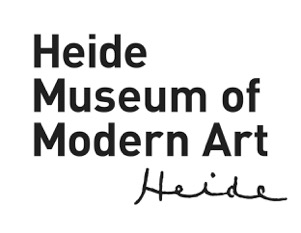

In February 2017, THINKtent was presented in Kragujevac at a conference for the HUMAN CITIES/Challenging the City Scale 2014-18 project, co-financed by the EU Creative Europe programme. This initiative engages cities in France, Belgium, the United Kingdom, Finland, Estonia, Poland, Austria, Slovenia, Spain, Italy and Serbia.
THINKtent was used as a brainstorming space closing the conference.
THINKtent asked participants to reflect on the day of presentations from experts across all participant countries, and from local experts in the museum and cultural sector – as well as their site visit to the Creative Grand Park of Kragujevac, a new urban regeneration project in the city’s main public park, delivered by Belgrade Design Week with the support of the Dragica Nikolic Foundation and City of Kragujevac.
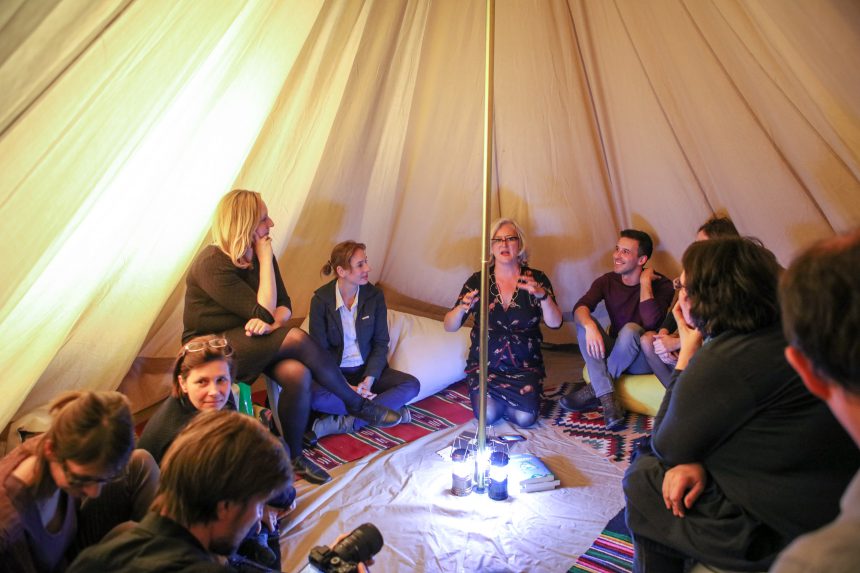
Belgrade Design Week chose Kragujevac as its HUMAN CITIES/ focus because of the city’s important civic, urban planning and industrial heritage in the heartland of Serbia – and its contemporary challenges as a post-industrial centre.
Now the administrative centre of Sumadija in central Serbia, Kragujevac was Serbia’s first capital, and the home of its first constitution, secondary school, university, printing press and pharmacy. From the 19th century it became an important centre of military production. In the 20th century it was the site of a mass execution of civilians by Nazi occupiers in World War II, which led to the establishment of a large memorial park in the city. Kragujevac today is best known for its munitions and automobile industries – under the brands of Zastava and Fiat – and is a regional university hub hosting 20,000 students.
Against this backdrop, THINKtent invited participants to generate and share Questions For Kragujevac – to support and advance the application of best practice participatory urbanism, in this distinctive local context.
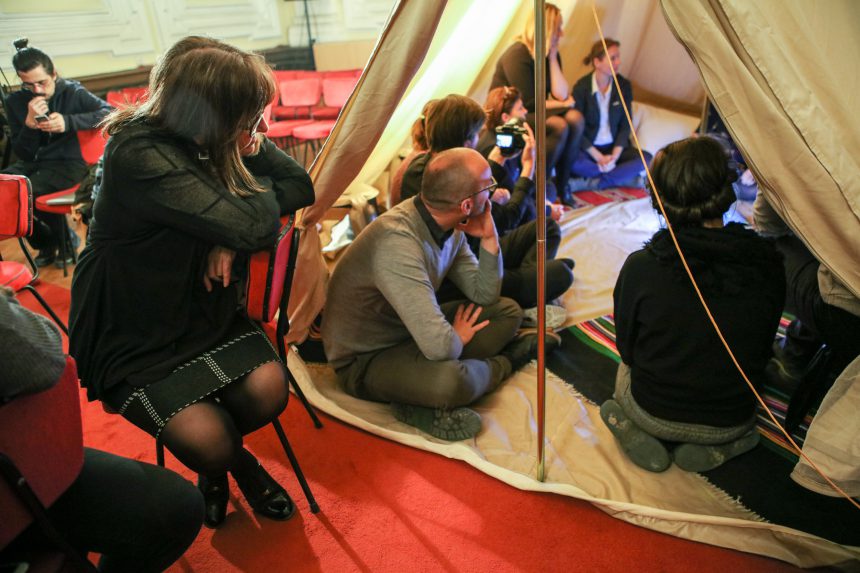
Visiting participants in THINKtent asked:
Are people happy in Kragujevac?
From the view in our hotel, the town looks stuck in the 1970s – why?
Do people here respect and appreciate history?
What are people’s favourite activities in their free time?
Is this city’s image mainly as an industrial town?
What is the role of tourism in Kragujevac?
What is the legacy here of the 1990s conflicts in the former Yugoslavia – including the 1999 NATO bombing?
What do people in Kragujevac want for their children?
Is this a young city, demographically?
Are people coming to Kragujevac to live and work – or leaving it?
Why would people who don’t live here visit Kragujevac?
How do we measure and better understand what is ‘grassroots’ participation in Kragujevac – including at the new creative park?
Does the new creative park really need a fence?
Is Kragujevac partnered or twinned with other cities in Europe, the ex-Yugoslavia, or elsewhere?
Does Kragujevac need new buildings to replace older, damaged ones?
Is the night life good?
Are there festivals?
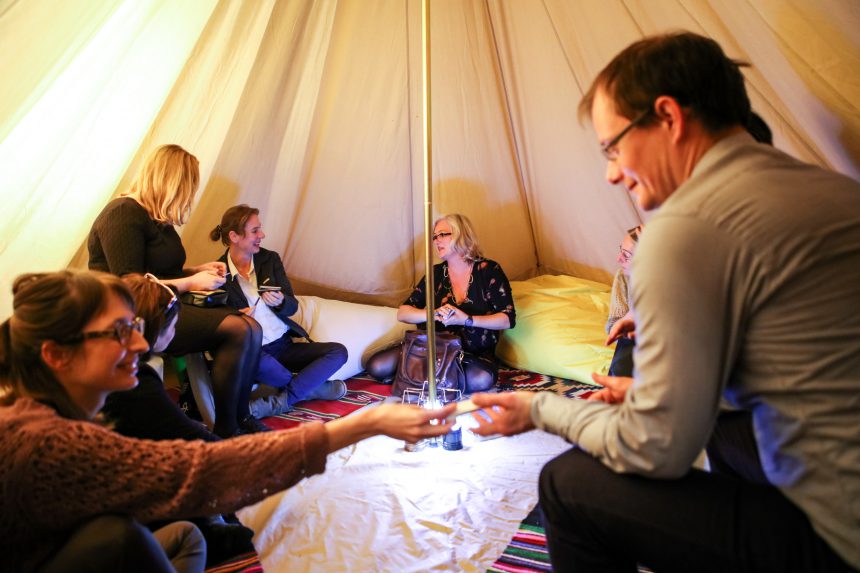
Local participants offered (the beginning of) some answers:
The story about regenerating the factory to make a creative industries space – we’ve heard that for a long time.
Kragujevac is a living city – but many people also leave it.
I was born here, in the early 1980s I finished high school and went to Belgrade. I had a baby and came back here, I have two children. When I saw this conference was happening in Kragujevac – I said, ‘I have to go!’ I couldn’t find any friends here who wanted to come. I called my sister and asked her as well, she said ‘I’m not interested, I have my own problems. I don’t feel like a citizen of Kragujevac.’ She doesn’t want to take part.
That’s the real situation here – I have a lot of educated, creative friends in Kragujevac. Their focus is on having a job, a family. The internet, having coffee.
We’re disappointed, mainly.
I think everything really stopped here during the 1990s, especially after the bombing.
We expected a lot after Milosevic went. We thought we’d be part of the EU. We lost energy, and I’m really sad about that.
There are initiatives in Kragujevac, but on a large scale. Most people don’t want to be involved.
This new creative park with the playground for children, and the place for older people and teenagers – it’s really positive. It’s always easier here when someone else delivers something like this.
I used to be active in a small citizen’s association here doing projects in villages near Kragujevac. We received some British Council funding.
There is a lack of trust in government.
To drive new initiatives in Kragujevac, ideally people should engage with both government and the non-government sector.
People don’t think they can change things.
This led to discussion about what effective participatory urbanism really means today. In Kragujevac – and also other places …
In other parts of Europe (the current EU) there are parallel engagement challenges – and rewards:
People are diffident, they tend to be worried and move in closed circles. You put energy into change but don’t see the results.
I think people are a bit afraid of having their ‘super curated’ projects and enthusiasm taken by ‘the establishment’, and used for political purposes. I think that kind of initiative is a good kind of politics – but there is a fear, initially.
If we are not connected, we don’t care about what’s common to all of us.
We paid attention to building relationships between urban neighbourhoods and villages.
Streets and districts can work to know and support each other – that’s about people getting together – and that can lead to more support at municipality level.
I moved into a new neighbourhood and discovered a very active Facebook page, connecting people across lots of activities.
Almost nobody wants to spend 100 hours a week building community capacity. But little things work – baking a cake, bringing a bottle of wine.
We have a situation where there are so many grassroots projects – it somehow becomes a nightmare of participation.
It’s scary, that almost everything that comprises ‘the commons’ (an idea that’s been around since the Middle Ages) is being destroyed.
Community-driven urban interventions can become an excuse to stop funding or supporting things, an institutionalised way for the public sector to slash budgets.
We’re doing a project to make a pond swimmable – and doing the work of government.
Participatory budgets help, as an instrument.
We don’t trust our politicians, but small steps can build trust and may give more satisfaction.
In communist and socialist times, nobody took care of public space – and they still don’t want to do that. All open space was everyone’s, now it’s nobody’s. How do we find consensus about what to do?
In the West, people used to rely a lot on public initiatives. Now there is this moment of transition for us as well – ‘When we don’t know if we’re fucked.’
I spent the last few years in Shanghai, where the government seriously (seriously!) takes care of the public space. It seems like the Truman Show. If someone feels like planting a carrot in the ground, they can’t.
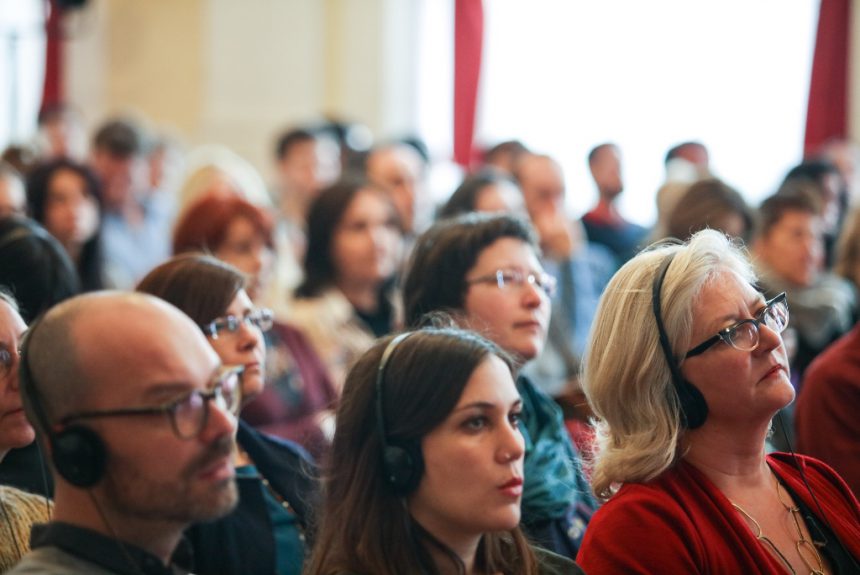
And all this led to some conclusions – or maybe a road map, some lines to colour in?
For the next steps … some new Questions from Kragujevac:
How do we teach children how to grow carrots together – and share what they grow?
Children aren’t the problem. Isn’t it adults who are more closed and cynical? Don’t the least creative people seem to be the ones who’ve studied?
We all need to get out of our safe zones, to dare to ‘be like kids’ … maybe, in some version of a creative playground?
THINKtent Beograd Human City – THINKtent Belgrade Human City
THINKtent Beograd Human City aims to offer the people of Belgrade an intimate, beautiful and safe space for them to come together for conversation and reflection.
In this fast (and fast-changing city) and in our jangled (and notoriously noisy) contemporary times, THINKtent Beograd Human City allows people to enter a new form of public space: a stable space where you can slow down, reflect and exchange views and ideas – away from the relentless distractions of smartphones, social media and the demands of daily life.
Dr Natasha Cica hosts and facilitates all sessions of THINKtent Beograd Human City, takes handwritten notes and still photographs, which inform future publications and presentations about the project.
No recording or phones are allowed inside the tent, but vox pop exit interviews may be filmed and broadcast.
Books, poems, songs and other cultural artifacts are welcome inside THINKtent Beograd Human City.
Appropriate and charming refreshments are served in sessions to enhance the sociability of this experience.
Key actors
THINKtent Beograd Human City is an initiative of Dr Natasha Cica, director of change-focused initiative Kapacity.org.
THINKtent Beograd Human City is developed in collaboration with Belgrade Design Week.
THINKtent Beograd Human City deploys an interior created by Belgrade interior architect Milivoje Stojanovic of PROTOTYPE of Cumic Design District in central Belgrade, with Miroslav and Jasna Stojanovic.
THINKtent Beograd Human City engages the people of Belgrade as participants.
Role of design
Design is central to the project – informing the chosen structure, the physical interior and the dialogue-based methodology of the conversations comprising THINKtent Beograd Human City.
In terms of the chosen structure, the size (relatively small) and circular, tapered shape of the bell tent encourages a feeling of intimacy that supports and generates human connection between participants. The height and shape of the tent’s opening is especially welcoming to children.
Regarding the physical interior, plums are core business in Serbian culture, and this deeplyinformed the design brief executed by Belgrade interior architect Milivoje Stojanovic of PROTOTYPE, with Milivoje and Jasna Stojanovic. The thematic is ‘Who Plums You?/ Ко те шљиви?, a Serbian saying that translates into something resembling, ‘Who cares … ?’. The result is a curation that populates the tent interior with specially commissioned furniture, lighting, cushions, textiles, fruit and a bespoke perfume … a wonderful blend of old and new, dark and light, east and west.
Concerning the methodology, the programming and facilitation of each session of THINKtent Beograd Human City deploys design thinking through dialogue, to create human capacity for shared and sustainable change – consonant with community development methodology.
CONTACT (of the editor)
Vesna Jelovac – Organization: BDW – Email vesna@belgardedesignweek.com
The Urban incubator: Belgrade
The Urban Incubator is a Goethe-Institut ‘project of excellence’, supported by the City of Belgrade and the Municipality of Savski Venac. The Urban Incubator: Belgrade involves more than ten local and international projects from the fields of art, architecture, urbanism and social engagement.
The Urban Incubator is a unique cultural project aiming at a critical and participatory re-development of the neglected city quarter of Savamala –international artists, researchers and activists will support and enable residents and local institutions to revitalize their urban environment.
When, in 2010, the Goethe-Institut Belgrade was looking for a temporary relocation, possibly a pavilion or a container village on a derelict space in Savamala, the project “Eurocode 8” was born: according to German earthquake safety regulations, a two to three year ́s evacuation of the Goethe-Institut at Knez Mihailova would offer a unique opportunity to focus the activities of a prestigious and very much appreciated cultural institution in the Belgrade downtown area of Savamala.
But when, in May 2011, yet another Eurocode 8-report permitted the Goethe-Institut to stay, the idea of a “Goethe-Institut on the move”, the option to define a long-term cultural project for the re-generation of Savamala persisted. “This is the right time and place” was the bottom line of discussions about how to conceive a new bottom-up, cultural approach to contribute to the re-generation of a Belgrade city quarter – a “jewel
of a city quarter” at the banks of River Sava very much neglected and cut-off – by railway tracks, congested traffic arteries or more mental borderlines – from public awareness as much as from much hope for potential improvement by investment, development or any other initiative any time soon.
This opened the path to invite local and international projects to come to Belgrade and to be part of a long-term process which would introduce local and international initiatives and approaches how, together with residents and citizens of Belgrade and Savamala, to create a new awareness about the potential of Savamala, to discover the “pride of the place”, its stories and hidden history, and – at the same time – to develop new ideas and visions: about who will and how to shape Savamala, how to create the city of the future.
Key actors
The Urban Incubator is a Goethe-Institut ‘project of excellence’, supported by the City of Belgrade and the Municipality of Savski Venac. The Urban Incubator: Belgrade involves more than ten local and international projects from the fields of art, architecture, urbanism and social engagement, which will be present and operational in Savamala for during 2013. Project authors include raumlaborberlin, the University of Technical Sciences (ETH) Zurich, “Third Belgrade” Artists´ Initiative (Belgrade), the University of Fine Arts of Hamburg, the Zurich University of the Arts, Nexthamburg (Hamburg), GingerEnsemble (CH), Camenzind (Zurich), Maja Popović and Boba Stanić (Belgrade/Amsterdam), Goethe-Guerilla, and many others.
Partners of URBAN INCUBATOR: BELGRADE Project: German Agency for Technical Cooperation GTZ, Federal Ministry of Transport, Construction and Urban development of Federal Republic of Germany, Embassy of Switzerland in Serbia and Pro Helvetia Foundation, the City of Belgrade, municipality of Savski Venac, cultural center “KC Grad”, Dom Omladine Belgrade, ETH Zurich, PERI.
Role of design
How can the future of a city be designed when there are no financial means for investment, when legal issues are unclarified, and when institutional procedures are slow? These questions are central to the Urban Incubator: Belgrade and the future of Savalmala. The Urban Incubator: Belgrade seeks to address them by handing over the future of this city quarter to artists, cultural workers and activists and simultaneously enabling the local residents of Savamala to participate in the process.
Could this approach create alternative options to the established procedures of city planning? Students of the Faculty of Architecture, Belgrade, will investigate these questions. The Urban Incubator: Belgrade will be taken as a model for scrutinizing alternative methods of urban development. They will follow the Urban Incubator: Belgrade projects closely and develop their own ideas in and about Savamala.
CONTACT (of the editor)
Urban Incubator : Belgrade – Organization : Goethe-Institut Belgrade – Email : urbanincubator1@belgrad.goethe.org
|
|
|
|
|
|
|
|
|
|
|
|
|
|
|
|
|
We hereby introduce the concept of the new project ” THE GRAND CREATIVE PARK OF THE CITY OF KRAGUJEVAC”, under the implementation of the “Dragica Nikolić” Foundation, the City of Kragujevac and Belgrade Design Week (BDW).
The new “GRAND CREATIVE PARK OF THE CITY OF KRAGUJEVAC” is an initiative by the First Lady of Serbia Dragica Nikolić, who follows the best tradition of pre-World War II Serbian benefactors, inspired by her own experiences of growing up and living in her hometown of Kragujevac, as well as with the experience of BDW in the implementation of the EU-backed project HUMAN CITIES/ and the non-profit campaign to build “100 creative playgrounds for the children of Serbia”, in cooperation with the Municipal Government of the City of Kragujevac.
The project is technically supported by companies such as LAPPSET from Finland and Viabizzuno from Italy, global innovation leaders in playgrounds and lighting solutions, as well BRAND NEW WORLD from Switzerland, as consultants.
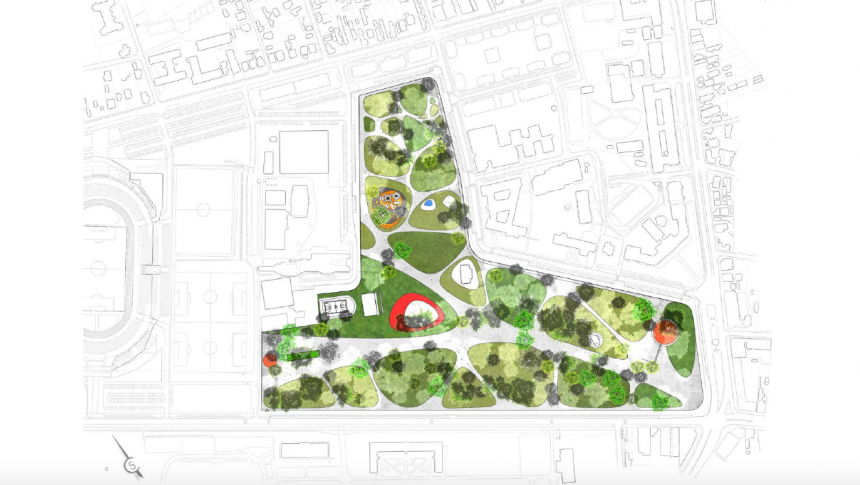
FOUNDATION “DRAGICA NIKOLIĆ”
The Foundation “Dragica Nikolić” has donated the funding for the first phase of the project, based on BDW’s research work co-funded by the EU HUMAN CITIES/ project.
Ms. Nikolić, through the establishment of the Foundation provides an example to citizens of Serbia, spreading the idea of the necessity of mutual support and assistance, guided by the principles of public-private partnerships.Through realization of non-profit projects, such as building of numerous maternity wards and nurseries throughout Serbia, as well as providing much needed professional equipment to the ailing national medical system, Ms. Nikolić successfully pursues the main goal of the Foundation – to increase the birth rate in Serbia.
In that sense, the Foundation “Dragica Nikolić”, the City of Kragujevac and BDW invite all interested citizens, companies, institutions and professionals of good will from Serbia and abroad, to join this new non-profit campaign and help place a new, green, creative and cultural Kragujevac on a map of Serbia and Europe.

THE CITY OF KRAGUJEVAC
Kragujevac is symbolically entering the EU before any other city in Serbia, by becoming part of the European project HUMAN CITIES /, which is co-funded by the European Union programme “Creative Europe”, as an innovative example of new thinking about the reconstruction of a city. The new concept for Kragujevac’s most important park opens the doors for the development of the park for at least the next ten years, both through public-private partnerships in financing and full participation of citizens in the decision-making process about the content of the park. The Great Park is traditionally a favorite walking place for all generations in Kragujevac, a dense canopy of century-old trees, walkways and benches that represent the right place for relaxation. Unfortunately, in the past few decades the park has inevitably shared the fate of the deterioration of the city.
The Great Park symbolizes the beginning of future revitalization of several key urban areas in the city of Kragujevac. The proposed new concept of the Great Park returns the park to the people of Kragujevac, who will be able to enjoy this beautiful urban oasis, enriched primarily with innovative and free-of-charge facilities. The formula for success is in the management of design principles – the thinking and the usage of innovative urban development methodologies and analysis which will be implemented in the project, leading to the realization of advanced designed content, tailored for different target groups that already use the park, and are expected to use it even more intensively in the future.
The City of Kragujevac has formed a special team for the project under the personal leadership of Mayor Radomir Nikolić, involving all key institutions of Kragujevac, from the Urban Planning Bureau to public utility companies necessary for the successful planning and development of the project, and invites all citizens and companies active in the city and region-wide to obtain all necessary information on how to become part of a great, new story – the story of “THE GRAND CREATIVE PARK OF THE CITY OF KRAGUJEVAC”.
Kragujevac is the fourth largest city in Serbia, with a population of 179,417 urban inhabitants, according to the 2011 poll, and 150,835 inhabitants in the suburban settlements. It is the center of the Šumadija region and is located about 120 kilometers south of Belgrade. Kragujevac is an important economic, cultural, educational and medical center of Šumadija, Pomoravlje and the neighboring regions. It is also the macro regional center for the regions of: Čačak, Kraljevo, Uzice, Jagodina, Krusevac, Pozarevac and northern Kosovo. By 1990, Kragujevac was the fifth most developed city in Yugoslavia right after Slovenian towns.
Today, Kragujevac is once again one of the strongest administrative, cultural, financial, industrial and political centers in the country. In many ways, this city can be called “the first in Serbia” – it was the first capital of the modern Serbian state (1818-1841); in Kragujevac, the first secondary school in Serbia was established between 1833 and 1835, and the lyceum (Licej) the precursor of the University of Belgrade, in 1838; the first court in 1820, the first theater (“Knjažesko – Serbian theater”) in 1835, the first newspaper (“Novine Serbian”), musical formations (“Knjažesko – Serbian gang”), first drug store, art gallery, museum, library…
After centuries of Ottoman (and Austro-Hungarian 1718-1739) rule, the city was liberated in 1815 from the Turks, and three years later declared the capital of the newly created state. Thus began its rapid development, the establishment of institutions of national importance and the massive immigration of the population, and in 1853 the beginning of industrial production in Serbia.
Ever since, Kragujevac has been a renowned industrial center, mainly due to significant military production, while since the mid-20th century, it is famous for the production of cars. The great contributor of the constant influx of population during the 20th century is the fact that Kragujevac was one of the largest industrial centers in Yugoslavia. Today Kragujevac attracts mainly young people who study at the University of Kragujevac, which has 11 faculties in the city and in neighboring municipalities.
Large arms, truck and car factories are located in Kragujevac. The city is among the four largest industrial centers in Serbia, given the fact that after World War II it became the largest industrial giant in the Balkans. The beginning of the disintegration of Yugoslavia had left a heavy impact on the economy of the city. Most of the largest manufacturing firms found them self in a difficult situation. In 2008, Italy’s Fiat announced the takeover of Kragujevac’s most significant company – Zastava Motors. Massive investments were made (around one billion euros), and the production of 300000 cars per year began. The halls were renovated, new substations were built, a many new employees were hired and the long-awaited production of the new Fiat model 500L had started.
In memory of the victims of the Wehrmacht shooting on October 21st 1941, the entire area of Šumarica was converted into the “21st October”memorial park where, among others, the Monument to the executed school pupils and teachers, the Monument to pain and defiance, the Monument to the shoe cleaners, the “Table for one” monument, the Monument of “Resistance and Freedom “… are located. At the entrance of the memorial park, an imposing building of the “21st October” memorial complex was built, whose architecture emphasizes the symbolism of Kragujevac’s tragedy.
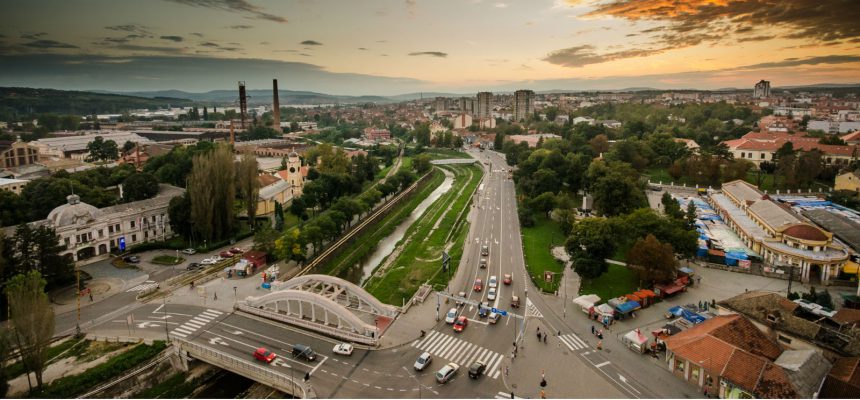
THE HISTORY OF THE GRAND PARK
The Grand park is a favorite walking place for all generations in Kragujevac. Estblished in 1898, it is covered with more than 10 hectares of greenery, a dense canopy of century-old trees, walkways and benches that represent the right place for relaxation. In the Grand Park and its surroundings, sports facilities for basketball, football, volleyball, tennis, American football and handball, indoor and outdoor pools, a bubble room, and a large number of restaurants are located. Based on the description, the park could be classified as a French-style type, and with its position, size and content it became the most important park in the city. The period between 1891 and 1914 can be characterized as extremely important in the history of architecture and urban development of Kragujevac. During that time, the development of the city according to a master plan had begun and a great deal of attention was paid to planning the development of parks, resorts and greening the city center. The famous Serbian writer Milica Jakovljević (Mir-Jam), who spent her childhood and youth in Kragujevac, describes the Grand Park: “In the evenings we visited the park, or on Sundays we stood by the window to watch the people go for a walk. Then we went to the park because it was the only place of amusement.”
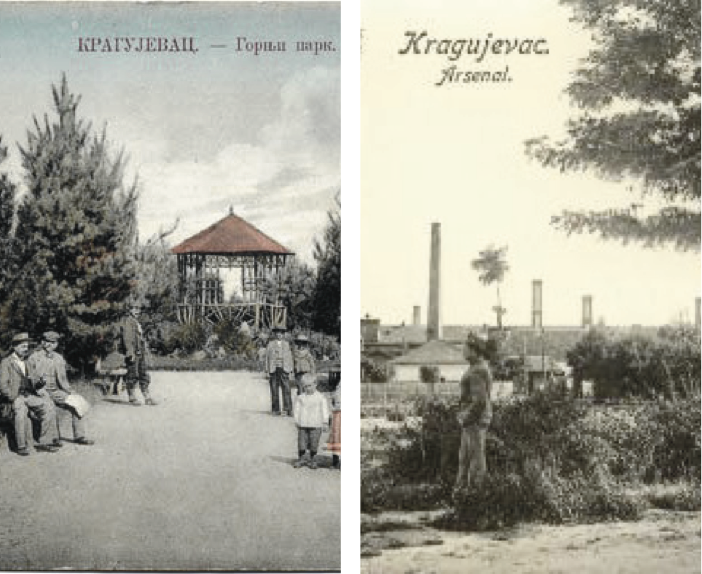
Between October 2014 and May 2015, BDW implemented the STATE OF ART phase of the HUMAN CITIES / project, with the goal of building the capacity of BDW to encompass the capability to manage, as an independent citizens’ initiative, the project of public-private partnership on a satisfactory high level, and within an optimal time- and budget- framework connect citizen and users with project donors, creatives and executors, using the methodology of Jan Gehl and the IDEO HCD TOOLKIT for successful participation of citizens in the process of urban regeneration.
This exercise was successful, and BDW opened its most ambitious initiative to that point in a park in Belgrade – the creative playground in Kalemegdan in May 2015 – and called upon all public and private partners in Serbia and the region to support the continuation of the initiative. Here is the story about second creative playground for the children of Serbia.
Foundations are making a huge comeback in Belgrade. Following the decision to establish the commission for facades restoration which will be funded with donations, the City of Belgrade announced it continues the cooperation with Belgrade Design Week in building playgrounds for children, which will also be a modern form of endowment.
Thanks to a donation of “NIS a.d. Novi Sad”, the old playground in the centre of the famous Kalemegdan park in Belgrade, in front of the iconic Cvijeta Zuzorić pavilion – in desperate need of reconstruction – finally got the long awaited complete reconstruction, along with the new creative standards introduced by BDW in 2013 at the first Kalemegdan playground, only a couple of hundred meters away. Thanks to this new partnership between “NIS a.d. Novi Sad” and the City of Belgrade, the most important and frequented park and historic monument in the centre of Belgrade has finally reclaimed both of its traditional playgrounds for future generations, as it was custom for generations of people coming from all parts of the city to enjoy a play, as well as for tourists and visitors with children from all over the world.
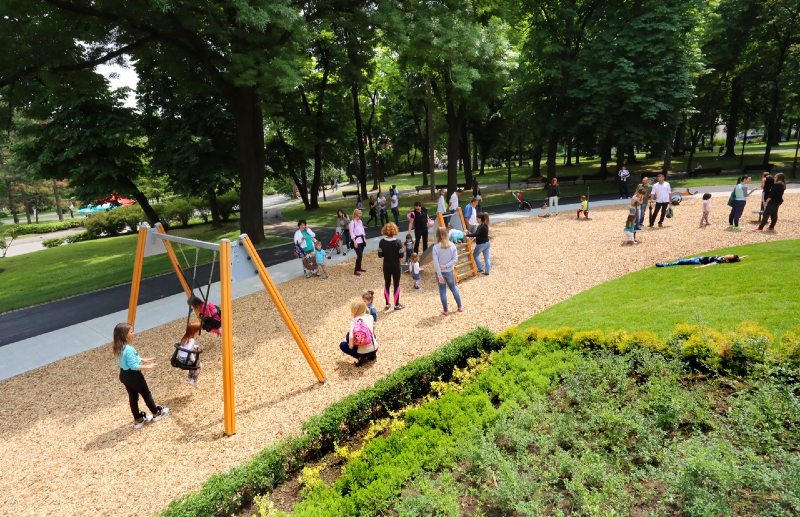
As a participant of the “Together for the Community” project, Belgrade Design Week, in collaboration with the City of Belgrade and the NIS corporation as main donors, the Embassy of Finland in Serbia and the Finnish company “Lappset” as partners, based on the project of the young architect Nina Radosavljevic, and built by the City Greenery of Belgrade, has provided a new, inspiring and safe place for children to play.
The new BDW playground was opened on Sunday 24th May 2015 by Belgrade’s Mayor Mr. Sinisa Mali, the Ambassador of Finland H.E. Mr Pekka Orpana, the Deputy General Manager of the NIS corporation Mr. Evgeniy Kudinov, the Director of corporate communications of the NIS corporation Ms. Sanja Lubardic, the Belgrade City Architect Mr. Milutin Folic, the Secretary of Belgrade’s Communal affairs Ms. Nina Jandric, the General Director of Belgrade’s City Greenery Mr. Slobodan Stanojevic, and the founders of Belgrade Design Week Vesna and Jovan Jelovac.
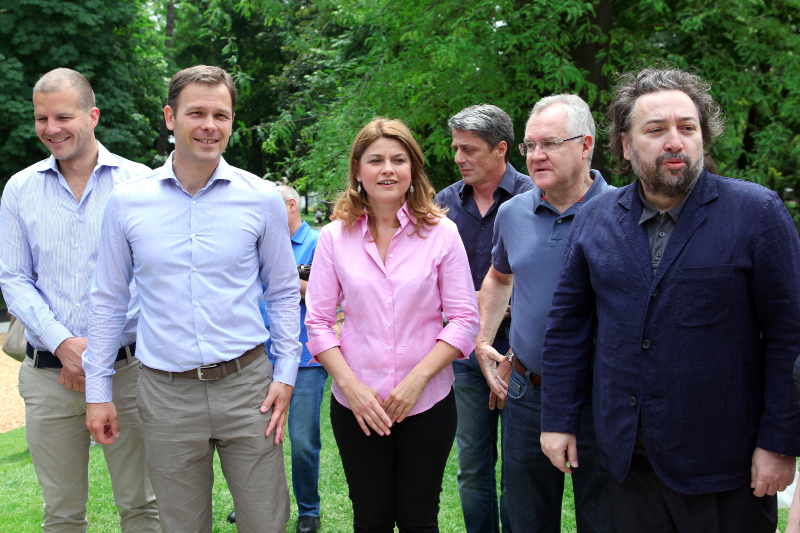
We hope that these two new cases of public / private partnership in Serbia, will inspire and encourage other companies and institutions throughout the nation, to become part of our project with own proposals, initiatives and donations, and that very soon our dream of “100 CREATIVE BDW PLAYGROUNDS FOR CHILDREN OF SERBIA” will become reality in many other places throughout Serbia.
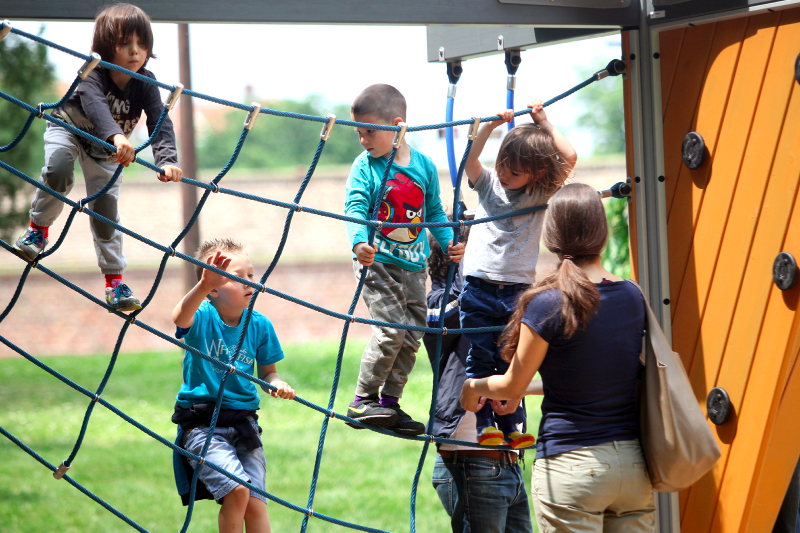
OUR PARTNERS ABOUT SECOND CREATIVE PLAYGROUND
“Today we hand over to our youngest citizens a beautiful, modern, creative playground in our busiest and biggest park in Belgrade. Today is also the European Day of Parks, and a great opportunity to remind ourselves of the importance of green spaces and parks in our city. The City of Belgrade currently boasts 58 parks, the biggest of which is the one we are in today, the park of the Kalemegdan fortress, and it is my wish that we celebrate the next European Day of Parks with even more parks in our capital. I think it’s very important to pay attention to green spaces, to parks development and design. Over the past year we have organized many parks, but what is important is that in addition to parks, we also design children’s playgrounds. Parks, as green areas should be places where our fellow citizens spend their free time and use them for recreational activities, but those parks must have playgrounds like this one, so that our youngest citizens, our children, can spend their time being active.
I want to thank NIS because, as a friend of the City of Belgrade, it donated part of the funds to build this playground and make it look like the way it does today. I want to thank the Finnish Ambassador, since the equipment for this playground is provided from Finland with his assistance, and I would also like to thank our friends from Belgrade Design Week who came to the City of Belgrade with this lovely idea, connected all of us, and finally, successfully completed the whole project! The City of Belgrade has now become richer for another key “design-playground” – I think we all agree it is really beautiful, and I invite Belgraders to join us today, on weekends and days ahead, to spend time here with us.”
Sinisa Mali, Mayor of Belgrade
“As a future-oriented company, NIS gladly supports ideas and innovations that contribute to the welfare of the community, and “BDW’s Creative Parks” project is exactly that. Through our social responsibility programs we support a number of projects for the development of the community in which we operate, and particularly for the young. It was our great pleasure to support this wonderful idea and thus contribute to the opening of yet another inspirational playground for the children of Belgrade.”
Sanja Lubardic, NIS Director of Public Relations and Communication.
“I was walking around Kalemegdan recently, and I realized that a year after the opening of the playground nothing was broken, which proves the quality of playground components is very high. I think that the implementation of this project was facilitated by good cooperation between all the partners: city authorities, investors, designers and Belgrade Design Week. Children’s enjoyment is the reason our company is particularly glad to be a part of this project”
Boris Tancabelic, Director of the Lamda development’s Belgrade office.
Since 2014, the Human Cities network has been working on Challenging the City Scale to question the urban scale and investigate cocreation in cities. The Human Cities partners have carried out urban experimentations in 11 European cities empowering citizens to rethink the spaces in which they live, work and spend their leisure time.
Challenging the City Scale, journeys in People-Centred Design is the final book of the project. Through conversations with people involved, the book examines how bottom-up processes and their design, tools and instruments generate new ideas to reinvent the city. It offers inspiration and insights to everyone, from practitioners and politicians to designers and active citizens, eager to try out new ways to produce more human cities together.
Title : Challenging the City Scale, Journeys in People-Centred Design
Collective book co-edited by: Olivier Peyricot, Josyane Franc, Frank Van Hasselt
Authors: Josyane Franc, Olivier Peyricot, John Thackara, Alice Holmberg, Côme Bastin, Fleur Weinberg, Anya Sirota, Frank Van Hasselt, Robin Houterman
Graphic design: Audrey Templier, Isabelle Daëron Language: English Publisher and distributor: Birkhäuser, Basel
Co editors : Cité du design (Saint-Etienne) et Clear Village (Londres) ISBN: 978-3-0356-1796-2 Format : 21,5 x 26 cm (vertical)– 176 p Price: 39.95 € Available in partner’s bookshops and bookshop distributed by Birkhäuser Open access digital version: https://www.degruyter.com/view/product/510323?format=EBOK
The printed version was launched on 4th May 2018 in Graz, during the event organized by FH JOANNEUM included in the programme of the Festival Design Month.
You can now download it in digital , open access version following this link:
01_human_cities_challenging_the_city_scale_2014-2018_investigation
The book “Investigation” is a collaborative research work, made from all the case studies collected by the partners in Europe publicated on this website. They tell about actions led by creative citizens to transform their urban environment. Researchers from Cité du design Saint-Étienne, the Department of Design of Politecnico di Milano and Urban Planning Institute of The Republic of Slovenia Ljubljana provide a state of the art of these initiatives. Analysing these multiple examples, they investigate how urban dwellers participate, get organized and collaborate with creative professionals to prototype more liveable cities.
This scientific work published by Cité du design Saint-Étienne is addressed to researchers, practitioners, but also developers or creative citizens.
It is both an object of Design research and an incentive to develop experimental and collaborative projects of urban transformation.
Title: Human Cities / Challenging the City Scale 2014-2018 / Investigation
Main authors:
Cité du design Saint-Etienne: Isabelle Daëron, Floriane Piat & Eléa Teillier
Design Departement, University Politecnico di Milano: Davide Fassi & Laura Galluzzo
Urban Planning Institute of the Republic of Slovenia, Ljubljana: Matej Nikšič, Nina Goršič & Biba Tominc
Language: English
Copyright © Cité du design, 2018
ISBN: 978-2-912808-79-0 . Format : 215×260 mm – 240 p – not sold – free distribution within the framework of Creative Europe Programme of the European Union 2014-2018
As cities organizations are facing major urban and technological transformations, European citizens are taking possession of their cities, collaborating or acting for its renewal. Which kind of tools are set up to think and produce the public space together? How to make these bottom-up initiatives sustainable?
Challenging the City scale 2014-2018 / Investigation is a collaborative research work of Human Cities project, made from more than 80 case studies collected by the partners in Europe. They tell about actions led by creative citizens to transform their urban environment. Researchers from Cité du design Saint-Étienne, the Department of Design of Politecnico di Milano and Urban Planning Institute of The Republic of Slovenia Ljubljana provide a state of the art of these initiatives. Analysing these multiple examples, they investigate how urban dwellers participate, get organized and collaborate with creative professionals to prototype more liveable cities.
This scientific work published by Cité du design Saint-Étienne is addressed to researchers, practitioners, but also developers or creative citizens.
Title: Human Cities / Challenging the City Scale 2014-2018 / Investigation Main authors: Cité du design Saint-Etienne: Isabelle Daëron, Floriane Piat & Eléa Teillier Design Departement, University Politecnico di Milano: Davide Fassi & Laura Galluzzo Urban Planning Institute of the Republic of Slovenia, Ljubljana: Matej Nikšič, Nina Goršič & Biba Tominc
Language: English Copyright © Cité du design, 2018 ISBN: 978-2-912808-79-0 . Format : 215×260 mm – 240 p – not sold – free distribution within the framework of Creative Europe Programme of the European Union 2014-2018
A playground for children, a water playground and a specially equipped exercising space for teenagers and seniors are adjusted in the zone for these facilities.
They are located in the center of the northern section of the Grand Park. These three micro units are arranged around the perimeter of large, open and sunny walkways, urban picnic areas, and the zone for potential gathering of a larger number of people.
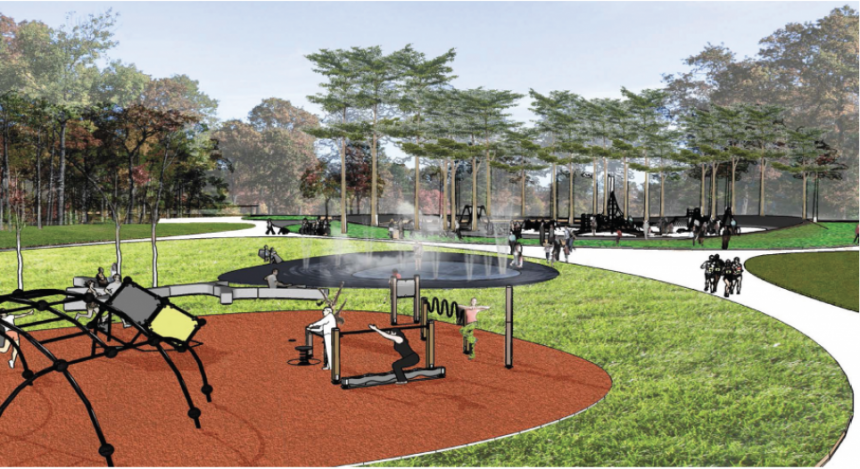
PLAYGROUND FOR TEENAGERS AND SENIORS are located close to the street near the Faculty of Engineering Sciences, as a minor motif and a separate entity. Hidden beneath the canopy of existing plantations of tall vegetation. The playground is equipped with devices that enable the entire complex of activities for seniors and teenagers – such as parkour exercises.
Analyzing the needs of parks users, we found out that many youngsters are improvising their own park our facilities from broken and abandoned equipment around the park. Equally strong we witnessed the park as extended living room used by the tenants of the nearby municipal retirement home. Consciously mixing younger and older citizens, we strive to try and encourage new relationship building with the desire to accomplish better understanding between these two age groups.
WATER SQUARE / PLAYGROUND, as a separate entity, is located in the sunniest section of the park. At the same time it is a sensation in the form of water vapor during most of the year but also a place for refreshment and children’s play in the warm summer days. In the overall landscape of the park, these two sections are designed as a neutral park platform, without the intention to be anything more than what they are.
CHILDREN’S PLAYGROUND is the largest island of the small park archipelago. The size of the playground is determined by the programme emerged through the monitoring of the numbers of children who visit the park and the way they use it. The spatial concept of the first part of the analysis of the Grand Park in Kragujevac was the basis for locating the children’s playground.
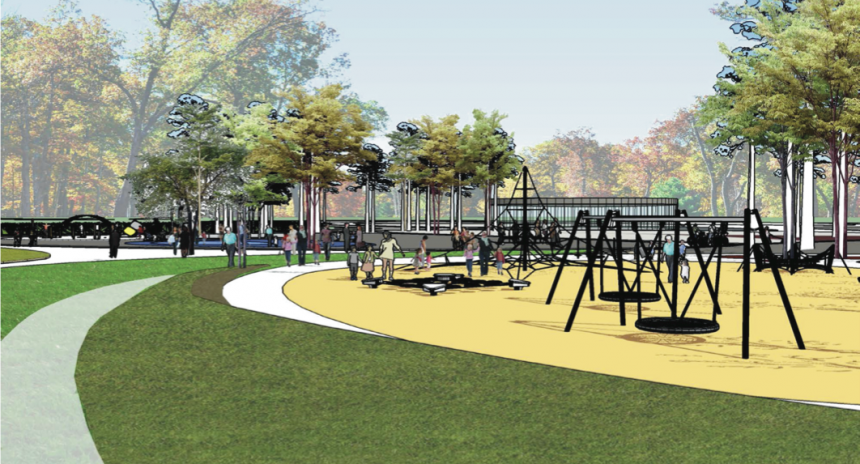
The analysis is primarily an experiment about contemporary public space of the city and has served to review the potentials but also to assume the contours of a possible environment in which the playground is located: the modes of walking through the park are on a micro level included in the space of the playground in the form of concentric circles of different themes of movement.
The playground is divided into two parts for different age groups. Materials are selected according to the purpose of this small eco-continent and adjusted to both children and undisturbed life of existing greenery. The choice is characterized by minimal construction intervention and a choice of soft, safe and natural materials. The existing plants in the form of two groups of tall pines are integrated as supporting elements of design playgrounds and large natural shading.
The amorphous form of the playground is adapted to the size and elements of the children and space perception of the parents. The design is focused on a balanced tangle of curves at all levels, built around the edges of the playground with the landscape motif of a small hill with a mild and manageable decline. This motif of fencing and the slight elevation on flat ground is a sculptural intervention similar to land-art, and its main purpose is to highlight the importance of design and territories imagined, as a small geyser of children’s energy is in the green areas of the Grand Park in Kragujevac.
Belgrade Design Week and the City of Kragujevac are inviting you to the presentation of the standards for the future development of the Grand Creative park of the City of Kragujevac, as part of the Human Cities/ European initiative.
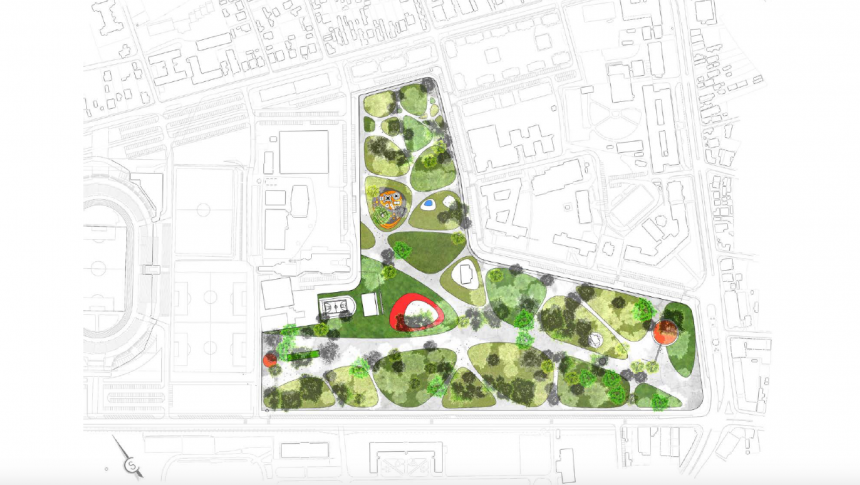
Jovan Jelovac, Belgrade Design Week founder, and prof. Aleksandru Vuja, from architecture DVA Studio, will present the “Grand Creative Park of the City of Kragujevac” project and answer the participant’s questions. The presentation will be held on Monday, 23rd May 2016, from 5PM to 7PM, in the Faculty of the Engineering Sciences – object A, side entrance from Dr. Elizabete Ros Street.
The Grand Park was traditionally a favorite promenade for all generations in the City of Kragujevac, where the dense canopy of century-old trees, walkways, benches and sports grounds represented a valuable place for relaxation and recreation. Unfortunately, in recent decades, the park has shared an inevitable fate of the general deterioration of its city. As an ecosystem, the Grand City Park is a rare urban tissue of park greenery maintained over one hundred and fifty years. The benefits of this heritage, the potential social interactions, the microclimate and emotional aspects that it generates all contribute to the general perception of this type of architecture as a focus point, around which we can gather our attention, assess our will for a better tomorrow and present it as our contribution to the urban community gathered around the pan-European Human Cities / project.
The aim of the project is to further develop the citizen’s beloved park by means of participatory urbanism and cooperation with some of Serbian and world’s best practices in the field of innovation and design. This is just the first step of defining a new framework of citizen’s participation about the park’s future design, with the primarily intention to provoke and activate a responsible involvement of all stakeholders into a joint search for standards of a possible development scheme for Kragujevac’s green zones. These standards define not only the principles of how to preserve and develop the park in a certain timeframe, but also new standards of how to initiate and decide matters regarding this and other valuable parts of the urban tissue.
A further objective of the project is to open up the dialogue with the citizens and inspire them to review, in a wider context, the existing urban, green and historical premises of Kragujevac, stretching from the Grand Park to Šumarice, and to try to integrate them into one uninterrupted entity, designed as a unique model of relaxation and contemplation, while at the same time creating a new cultural and historical destination for high quality tourism in Serbia’s heartland. This innovative complex would link the latest achievements of domestic and international creativity with existing rich heritage sites of the city of Kragujevac, which already include the best works of giants of creative thinking such as Vojin Bakić and Ivan Antić.

In April 2016, the Foundation and BDW triggered the realization of an idea concept of the future Grand Park, entitled “Creative”, as the first vision for discussion. The development of the preliminary design concept, as first inspirational stage of the revitalization of the park, based on BDW’s results of the EXPERIMENTATION phase, was entrusted to the team from Studio DVA, headed by architect and professor from the Faculty of Architecture in Belgrade Aleksandru Vuja, and his students, several of which are from Kragujevac.
Presentations and workshops in Kragujevac in May 2016, in which the concept of the new park will be presented to local citizens and the City, will mark this part of the EXPERIMENTATION phase. Another high point will mark the execution of the first part of the project – playgrounds for children, young people and seniors, as a possible sustainable beginning of the construction of a new park, as inspirational call to donors to support all the other sections of the park itself and the wider monumental/heritage park sites in Kragujevac, while citizens open the public discussion with the City and media which next functions and contents for the Grand park may be developed.
Therefore we are inviting you to join us, as a citizen, professional, neighbor, partner, project supporter or the opponent, and to share your opinion and ideas with us.

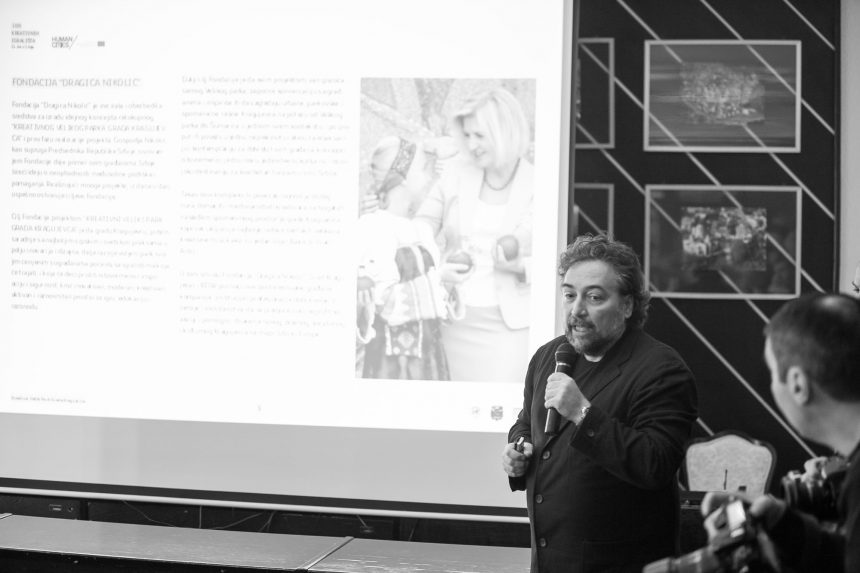
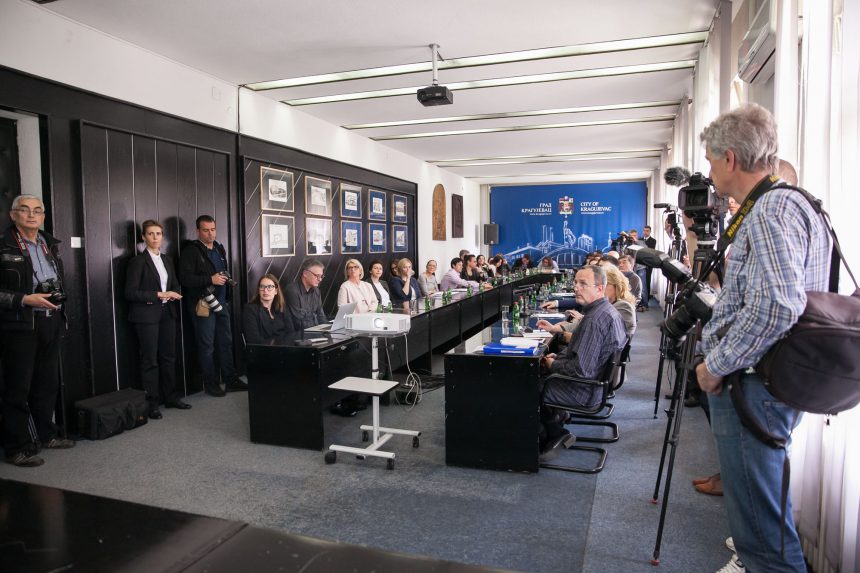
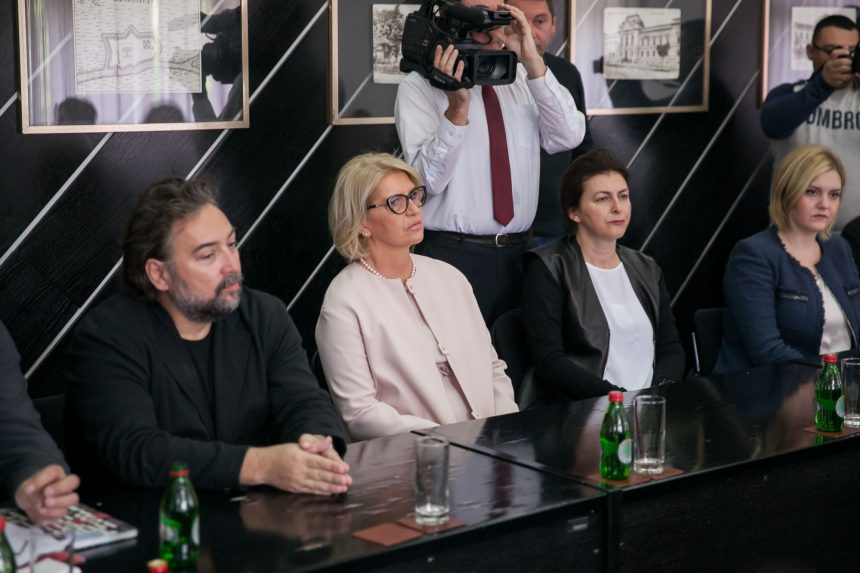
Belgrade Design Week and the City of Kragujevac are inviting you to the presentation of the concept of the “Grand Creative park of the City of Kragujevac” project, in realization of Foundation “Dragica Nikolic” and Belgrade Design Week, as part of the “100 Creative Playgrounds for the Children of Serbia” project. The presentation will be held on Wednesday, 11th May 2016, at 11 AM, in the Kragujevac’s City Administration building, hall NR. 105.
The project is implemented under the creative guidance of architect/professor Aleksandru Vuja and his architectural studio DVA, in cooperation with the team of experts from Belgrade Design Week and Brand New World from Zurich, Switzerland, as consultants, with the support of the partnering HUMAN CITIES /members.
The presentation of the “Grand Creative park of the City of Kragujevac” project will be attended by:
Ms. Dragica Nikolic, president of the Foundation “Dragica Nikolic”
Radomir Nikolic, Mayor of the City of Kragujevac
Jovan Jelovac, founder of the Belgrade Design Week
prof. Aleksandru Vuja, architecture DVA Studio
The first design and building phase of the project will be realized thanks to a donation of the Foundation “Dragica Nikolić” to the City of Kragujevac.
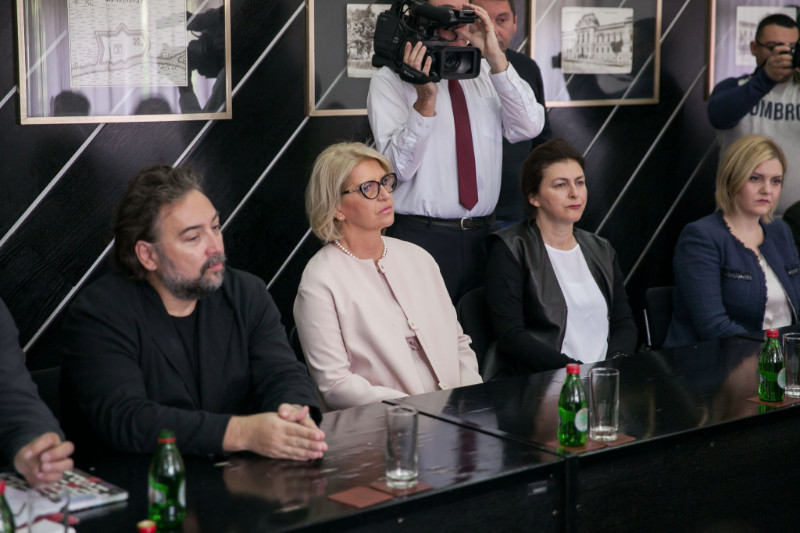
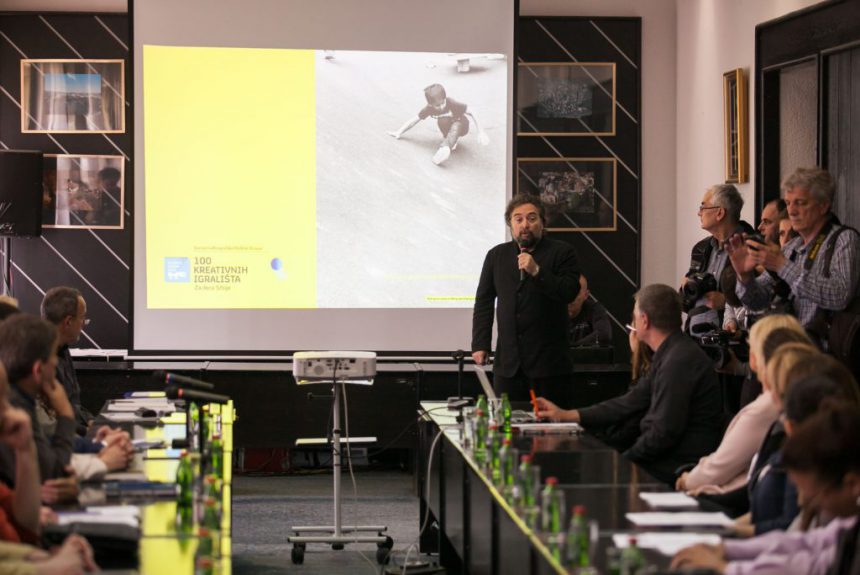
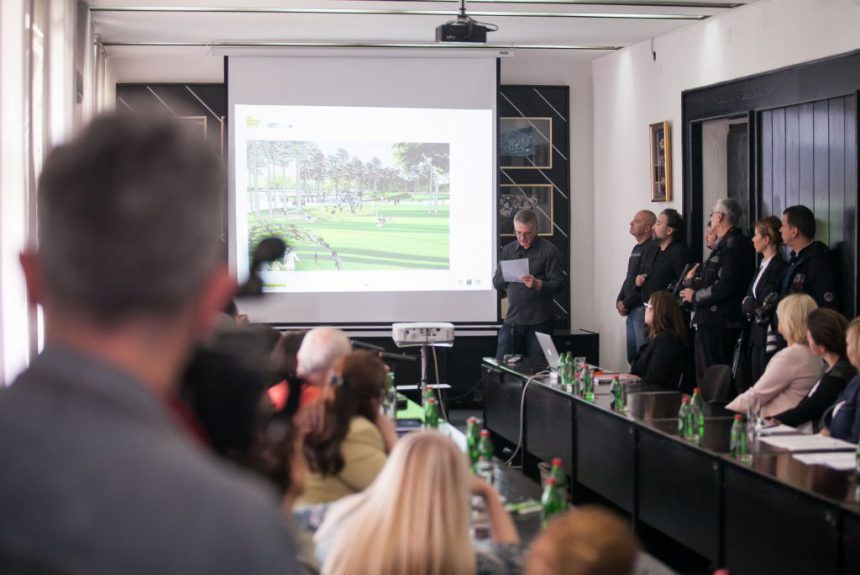
Between October 2014 and May 2015, BDW implemented the STATE OF ART phase of the HUMAN CITIES / project, with the goal of building the capacity of BDW to encompass the capability to manage, as an independent citizens’ initiative, the project of public-private partnership on a satisfactory high level, and within an optimal time- and budget- framework connect citizen and users with project donors, creatives and executors, using the methodology of Jan Gehl and the IDEO HCD TOOLKIT for successful participation of citizens in the process of urban regeneration.
This exercise was successful! BDW will open its most ambitious initiative to this point in a park in Belgrade – the creative playground in Kalemegdan on 24th May 2015, at 12:00h, timely on the “European Day of Parks”.
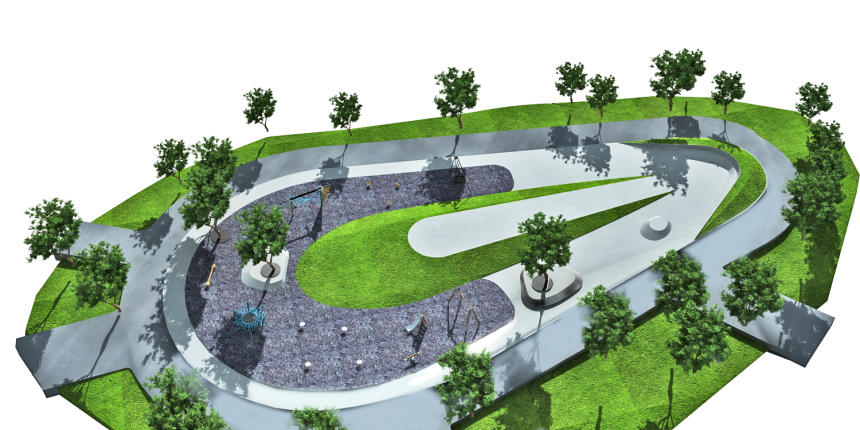
As a participant of the “Together for the Community” project, Belgrade Design Week, in collaboration with the City of Belgrade and the NIS corporation as main donors, the Embassy of Finland in Serbia and the Finnish company “Lappset” as partners, based on the project of young architect, Nina Radosavljevic, and built by the City Greenery of Belgrade, has provided a new, inspiring and safe place for children to play.The new playground was designed according to highest European standards within the HUMAN CITIES/ project.
The project is located across Kalemegdan’s famous Cvijeta Zuzoric art pavilion, and represents the second of 100 planned creative BDW playgrounds.To make this project happen, Belgrade Design Week has connected two key donors, the NIS corporation and the City of Belgrade. Their participation in the “100 creative BDW playgrounds for children of Serbia” project has now enabled one of the most important central city playgrounds in Belgrade to shine with a new, innovative concept, quality and appearance – a place that leading European cities would be proud of. The design of the playground was entrusted to a young architect from Belgrade, Nina Radosavljevic. As part of the promotion of Scandinavian design in Serbia, in cooperation with the Embassy of Finland, BDW has included the Finnish company Lappset. As one of the most awarded companies in the world for the equipment of children’s playgrounds, Lappset gave their valuable contribution to the project.
In 2013 Belgrade Design Week has started a completely new, non-profit action of the largest volume so far, which aims to gather the most responsible and most aware cities, municipalities, as well as foreign and domestic companies, institutions and embassies, who would, as sponsors and partners, with their donations joined the realization of “100 creative BDW playgrounds Serbia” throughout the country.
The plan is that one hundred not only new, but above all innovative playgrounds shall be designed and constructed in Serbia, following the standards that can now be seen everywhere in the advanced world. This project advocates a strong involvement of the local creative community, combined with top global achievements in creative industries for the development of Serbia, which in a nutshell is Belgrade Design Week’s trade mark, since ten years.
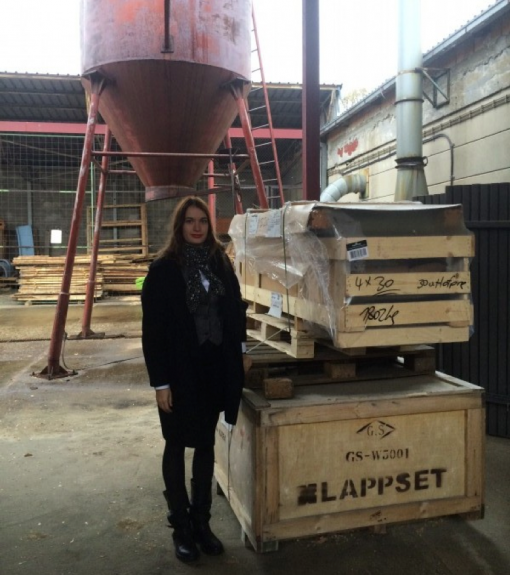
The second playground now built in Kalemegdan, as part of the “100 creative BDW playgrounds for children of Serbia” project, will hopefully serve as inspiration for a successful development of this unique private / public partnership, based on a strictly non-profit principles. We hope that this will motivate a large number of local governments and business donors, as well as institutions in Serbia and abroad, to join this nonpareil action, which we find absolutely necessary for communities in Belgrade, Serbia and the region today.
We wish that, by working with the best in the field of innovation and design, by building playgrounds that will last, are in accordance with highest environmental and sustainability standards, we will keep up with the time we live in. That means providing security, comfort and a creative, active and diverse place to play and develop for the most vulnerable and unprotected population of Serbia today – our children, said Jovan Jelovac, founder of the Belgrade Design Week.
What is the difference between these playgrounds and almost all other humanitarian activities intended for the youngest in Serbia?
In the two key elements that indicate the trademark of Belgrade Design Week’s ten years of activities:
– First: “Design Thinking”, as a creative philosophy that guarantees superior quality of the project
and
– Second: “Pro-Bono cooperation of all the partners”, which guarantees the realization of the project within reasonable budgets and shared responsibilities.
The printed version was launched on 4th May 2018 in Graz, during the event organized by FH JOANNEUM included in the programme of the Festival Design Month.
You can now download it in digital , open access version following this link :
01_human_cities_challenging_the_city_scale_2014-2018_investigation
The book “Investigation” is a collaborative research work, made from more than 80 case studies collected by the partners in Europe. They tell about actions led by creative citizens to transform their urban environment. Researchers from Cité du design Saint-Étienne, the Department of Design of Politecnico di Milano and Urban Planning Institute of The Republic of Slovenia Ljubljana provide a state of the art of these initiatives. Analysing these multiple examples, they investigate how urban dwellers participate, get organized and collaborate with creative professionals to prototype more liveable cities.
This scientific work published by Cité du design Saint-Étienne is addressed to researchers, practitioners, but also developers or creative citizens.
It is both an object of Design research and an incentive to develop experimental and collaborative projects of urban transformation.
A second book – addressed to a more general audience – will be released in September 2018 and presented in Tallinn during the Desainiöö festival.
Mjehur Na Mrezi – MNM – The Blop on the Net BON
https://www.mixcloud.com/MjehurNaMre%C5%BEi/
Mjehur Na Mrezi currently operates as podcast, produced and distributed weekly.
Content is distributed and promoted only through social networks / MixCloud, Facebook, Twitter.
More then 5,000 followers of MixCloud channel – by September 2015. Up to 5,000 followers on Facebook – by September 2015.
The strongest advantage of Mjehur Na Mrezi, in comparison to other media content available on the market, is its devotion to marginalized and yet very important values centred around gender equality, minority groups equality, subculture production, urban spirit in terms of innovation, progressive and alternative view on everyday life.
Mjehur Na Mrezi emphasizes neglected dimensions of media content on the market that is dominated by showbiz, cheap entertainment and infotainment. There is an alarming lack of media content that is acceptable and satisfying for middle and higher class of audience and that is the niche which Mjehur Na Mrezi aims to fill.
Finally, building relationship with regional artists and institutions will contribute to reconciliation and promotion of tolerance, understanding and better communication between different audiences.
Having in mind that the very recent future will bring substantial changes to the Serbian media market and that Internet, digital and mobile platforms will become prevalent environment for media exchange and consumption, it is of utmost importance to start creating challenging, innovative, authentic media projects as Mjehur Na Mrezi is.
Up until now, digital media channels and social networks has been perceived as alternative ways of communication, reserved only for small fragments of mass audience, interested in political narrowcasted content.
Mjehur Na Mrezi is interested in addressing wider audiences and changing their perceptions about the Internet, promoting it as mainstream media channel, that can be used as entertainment, activity and discussion forum, music and culture oriented, but still keeping interest and effort in being engaged and informative.
Project Mjehur Na Mrezi will make itself sustainable through stronger cooperation with commercial partners, building different ways and channels for content distribution and permanent human capacity building through associates network which will include students, media professionals, artists, influential public figures as guests and support in content production.
Key actors
MNM’s founder, Srdja Andjelic, a well known urban radio host, one of the founders of the legendary former Radio B92, and author of numerous TV and movie scripts.
MNM is developed in collaboration with Belgrade Design Week. BDW’s team of experts lead by Vesna and Jovan Jelovac will steer the necessarry topics of the HUMAN CITIES project development into equation.
MNM engages all the people of Belgrade and Serbia as participants, even the whole region. Mjehur Na Mrezi is aimed at an audience that is not satisfied with the existing media offerings, an audience that is underserved by traditional, mainstream media outlets, and as such, Mjehur Na Mrezi can become a fresh impetus for future change of the information market.
Role of design
Design is central to the MNM project – MNM is a product of pure design thinking and consulting by a whole line up of leading experts in Belgrade.
In the first phase of development, it is interesting to see the “design thinking” approach for the first time ever projected on the Serbia radio space. Sound – music, voices and tones – are intrinsically moxed to achieve aunique MNM signature house style. In the second and follow up stages, this identity will be transformed into video, internta and other more visual media.
But more than anything else, MNM is promoting “design thinking” VALUES through its content. It is not stretched too far to say that MNM is currently the ONLY “design oriented” media in Serbia where expertise and sophisticated forms of communication are valued over popular scores and interest. In the same time, it is arguably the only popular electronic media in Serbia to develop a critical content for topics such as architecture, design, arts, music, lifestyle, contemporary living, margin groups etc. No mainstream media in Serbia is currently elaborating those subjects.
CONTACT (of the editor)
Vesna Jelovac – Organization: BDW – Email: vesna@belgardedesignweek.com
The book arrived freshly printed in Ljubljana on 20th April and it will be launched in Graz on 4th May 2018.
After a great work of case studies collection by all the Human Cities partners, a deep process of analysis by Cité du design, Politecnico di Milano and UIRS, and a nice graphic design elaboration by Audrey Templier, the scientific publication of Human Cities-Challenging the City Scale is released.
Its title: Human Cities / Challenging the City Scale 2014-2018 / Investigation
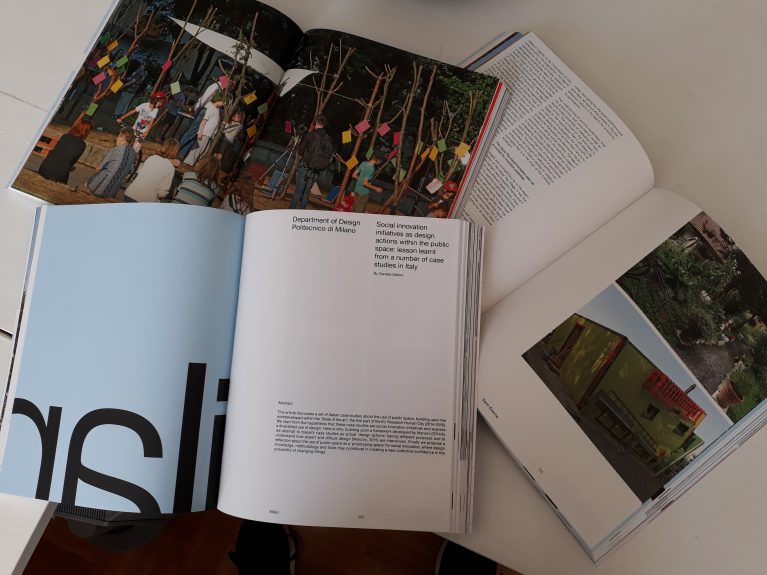
Glimpse of the book, fresh from the print shop in Ljubljana
As cities organizations are facing major urban and technological transformations, European citizens are taking possession of their cities, collaborating or acting for its renewal. Which kind of tools are set up to think and produce the public space together? How to make these bottom-up initiatives sustainable?
This Investigation is a collaborative research work, made from more than 80 case studies collected by the partners in Europe. They tell about actions led by creative citizens to transform their urban environment. Researchers from Cité du design Saint-Étienne, the Department of Design of Politecnico di Milano and Urban Planning Institute of The Republic of Slovenia Ljubljana provide a state of the art of these initiatives. Analysing these multiple examples, they investigate how urban dwellers participate, get organized and collaborate with creative professionals to prototype more liveable cities.
This scientific work published by Cité du design Saint-Étienne is addressed to researchers, practitioners, but also developers or creative citizens.
A large space is dedicated to images, to illustrate concretely this multiple initiatives, all linked by the sense of human scale and collaborative activities.
Our Investigation is both an object of Design research and an incentive to develop experimental and collaborative projects of urban transformation.

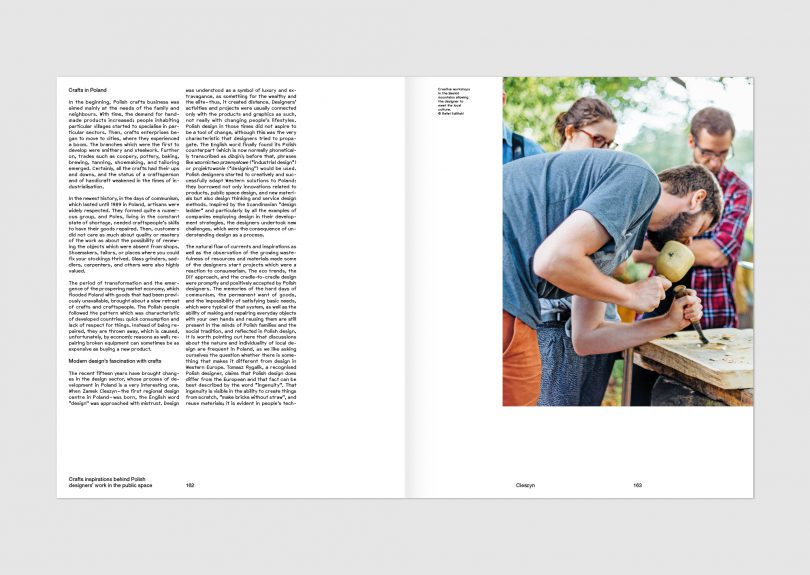
The book will be launched on 4th May in Graz for the 10 th festival Design Monat, during the event organized by FH JOANNEUM in presence of all the European partners of the programme. From this day, it will be available in digital version on the Human Cities project website – Case Studies section- and Cité du design Saint-Étienne website – publication section.
This is one of the common productions of the European project Human Cities_Challenging the City Scale . Together the partners will have produced 10 urban experiments in the various partner cities ; an exhibition-lab programmed in the main European Design festivals (next steps: Graz, Design Monat : 4thMay-24th June 2018 and Tallinn, Disainiöö: 10th– 16th September 2018) ; 11 international workshops ; masterclasses ; conferences ; and a final book narrating this experience (released in September 2018).
Architect by education, from youth football hope to international branding guru, all the way via design consultant and film producer, Jovan Jelovac basically lives in the airplane and works simultaneously in London, New York, Moscow, Berlin, Milano and Istanbul, based in Zürich, Switzerland with his branding consultancy – Brand New World. The imperative for Jovan Jelovac was to build a lasting educational, enlightening legacy in his battered native country of Serbia. As he is working for twenty years now in the top ranks of the global creative community, his absolution was pro-bono founding and curating a cutting edge international creative conference and festival, Belgrade Design Week. Belgrade Design Week has a most simple criteria for being invited to – belonging to “The Greatest Creative Minds of the 21st Century”. The best global thinkers are Jovan’s plants collected from his travels all over the world, and the festival is Belgrade’s future botanical garden, where the experiences, stories and the friendship shared with the lecturers stay forever treasured by the city and its people
INTERNATIONAL BDW CREATIVE CONFERENCE “HUMAN CITIES/ SHARING CLOUD“ IN KRAGUJEVAC
17. FEBRUARY 2017, FROM 14:00 – 20:00, IN THE ASSEMBLY HALL OF THE FIRST GYMNASIUM OF KRAGUJEVAC, DANIČIĆ STREET NO 1,
ORGANIZED BY BELGRADE DESIGN WEEK
WITH SUPPORT OF THE CITY OF KRAGUJEVAC

Belgrade Design Week welcomes its partners from eleven European cities to a unique international creative event “HUMAN CITIES/ SHARING CLOUD – Kragujevac 2017”, inviting the broadest public, citizens and citizens initiatives, architects, urban planers, the creative community, artists, economists, municipal administrations, media, academia and students from Serbia and the entire region, to join us on Friday, February 17th in Kragujevac.
The program is made of leading European case studies with easily understandable, concrete, hands-on “How to-” lectures, from cities committed to use design as a tool for changing their urban and public spaces and transforming their public authorities’ mindsets.
Entry is free, places are limited by the hall capacity, lectures are provided with simultaneous translation from English to Serbian and vice versa. The organiser reserves the right to change the program without prior information.
Present Kragujevac to the World, present the World to Kragujevac!
Kragujavac is privileged to be the host of this phase of the Human Cities/ project, right after Sent Etienne, London and Milan, and just before Ljubljana, Graz, Cieszyn, Helsinki, Bilbao, Tallinn and Brussels. BDW has chosen Kragujevac to be the topic of its HUMAN CITIES/ focus, because of the city’s important historical urban planing and industrial heritage in the heartland of Serbia, as well as current challenging historical crossroads between a postindustrial town and key regional university centre, with 20.000 students.
The initiative “Creative Grand Park of Kragujevac” is BDW’s contribution to the “HUMAN CITIES/ Challenging the City Scale 2014-2018” project, co-financed by the EU program Creative Europe, as part of BDW’s ongoing strictly non-profit action to develop “100 creative playgrounds for children in Serbia”, made possible by the donation of the Foundation Dragica Nikolić to the City of Kragujevac.
Belgrade Design Week and the City of Kragujevac, Serbia, are honoured to invite you to the “HUMAN CITIES/ SHARING CLOUD – Kragujevac 2017” event, on February 17th 2017 in the First Gymnasium of Kragujevac. Next to a strong line up of local speakers showcasing the urban development of Kragujevac, the conference will present extraordinary lectures from eleven European cities gathered around the Human Cities/ project, all closely related to urban realities in Serbia and the region. The HUMAN CITIES/ project is a crucial pan-european platform for sharing best practices in finding innovative solutions for living in cities today, and BDW’s conference offers a great opportunity for Serbia to present its own findings and developments to a broad European audience, and vice-versa, which is why we named the project THE SHARING CLOUD.
Present Kragujevac to the World, present the World to Kragujevac!
Kragujavac has the honour to be the host of this phase of the Human Cities/ project, right after Saint-Etienne, London and Milan, and just before Ljubljana, Graz, Cieszyn, Helsinki, Bilbao, Tallinn and Brussels. BDW has chosen Kragujevac to be the topic of its HUMAN CITIES/ focus, because of the city’s important historical urban planing and industrial heritage in the heartland of Serbia, as well as current challenging historical crossroads between a postindustrial town and key regional university centre, with 20.000 students.
The initiative “Creative Grand Park of Kragujevac” is BDW’s contribution to the “HUMAN CITIES/ Challenging the City Scale 2014-2018” project, co-financed by the EU program Creative Europe, as part of BDW’s ongoing strictly non-profit action to develop “100 creative playgrounds for children in Serbia”, made possible by the donation of the Foundation Dragica Nikolić to the City of Kragujevac.
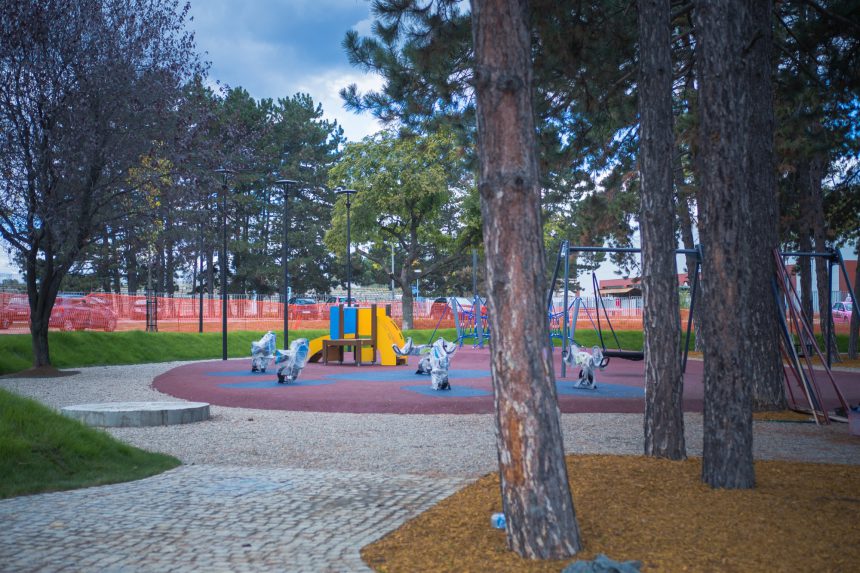
Event Program:
The “HUMAN CITIES/ SHARING CLOUD – Kragujevac 2017” program consists of an inspirational creative conference searching for proposals for design-thinking and participative-urbanism in Serbia and Europe today, as well as an exhibition of works of all eleven partners of the “Human Cities/ Challenging the City Scale 2014-2018” project. One of the presented projects is BDW’s “Creative Grand Park” development, developed as part of the Human Cities/ project and built as the first private / public partnership of its kind, between the Foundation Dragica Nikolić and the City of Kragujevac.
The conference”HUMAN CITIES/ SHARING CLOUD – Kragujevac 2017” ” presents a unique opportunity for engaged citizens and citizen’s initiatives, municipal administrations, universities, urban planers, architects, artists, economists, government, media and students from all vocations, to get introduced to the latest European developments about exploring the way in which the inhabitants reclaim the constantly evolving contemporary city (especially through experiments in the urban space) and ways of (re)inventing city life, as sources of wellbeing and quality of life. These structural changes are impacting both people and places like shops, public squares, parks, or streets in town and city centres.
Conference HUMAN CITIES/ SHARING CLOUD Kragujevac 2017 Program:
– Welcome Note: Mayor of Kragujevac Radomir Nikolić
– Introductory Note: Belgrade Design Week Jovan Jelovac – 14:00h – 15:30h

CASE STUDIES KRAGUJEVAC: LESSONS FROM KRAGUJEVAC TO HUMAN CITIES/ PARTNERS
– History of unique urban planing in Kragujevac:
The Šumarice Complex / Making of the Memorial Park. Jelena Davidović, Curator of the Museum 21. October, Kragujevac, Serbia
– Development of industrial heritage in Kragujevac: Converting the first armory in Serbia (The Arsenal) into a centar for the creative industry. Marko Grković and Đorđe Milovanović, Institute for Protection of Cultural Monuments in Kragujevac, Serbia
– Case Study Grand Park in Kragujevac I:
How to return the Grand Park in Kragujevac to its citizens with support of private/public partnerships, using participative urban planing and collaboration with leading Serbian and global practices in design and innovation? Belgrade Design Week, Jovan Jelovac, Belgrade, Serbia
– Case Study Grand Park in Kragujevac II:
How to revitalise a neglected city park in Kragujevac into a central creative zone, with intention to provoke and inspire all stakeholders to jointly search for standards of a possible development scheme for the city’s green zones? Prof. Aleksandru Vuja, Studio DVA, Belgrade, Serbia
– Case Study “THINKtent”:
How to use the international experience of moderating an exchange of thoughts for the wellbeing of the development of Kragujevac? Nataša Čiča, Kapacity.org, Hobbart, Australia
15:30 PM – 16:00 PM Coffee Break
Participation in the THINKtent experimentation / Nataša Čiča (First session in English – no translation)
16:00 PM – 17:30 PM
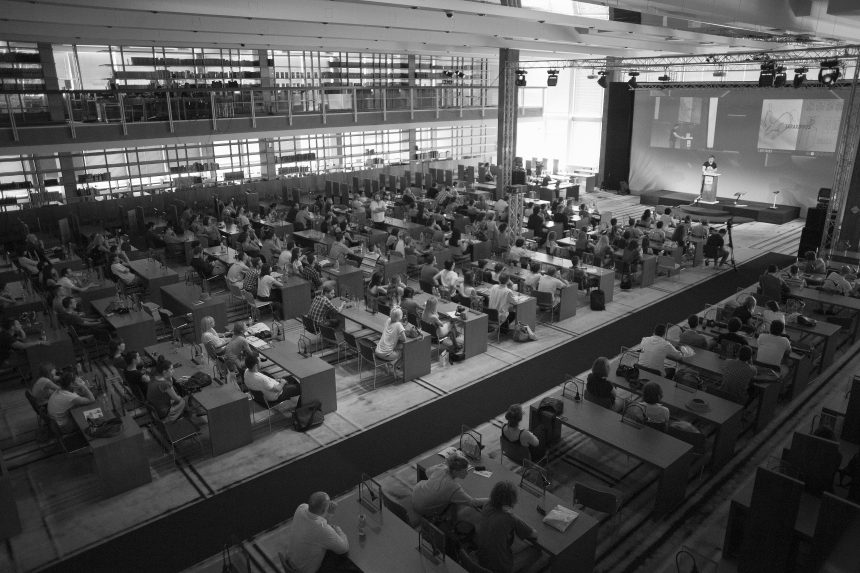
CASE STUDIES HUMAN CITIES/: LESSONS FROM EUROPEAN CITIES TO KRAGUJEVAC
– Case Study Brussels / “Pro Materia”:
How to start a grassroots initiative as a citizens association about better living in our cities, which then gets an European dimension and significance? Louisa Vermoere, Pro Materia, Brussels, Belgium
– Case Study London / “Makers Mile”:
How to connect innovative ideas of your neighbours as a citizens association, and in the process invent a whole new creative quarter in London? Frank Van Hasselt, Clear Village, London, Great Britain
– Case Study Sent Etienne / “Banc d’essai”:
How to decorate and animate our public spaces? How to forge stronger ties between generations and to give shape to the appropriation of space for all? Where needs are expressed, practices are created. Uses becoming clearer: siting, eating, reading, playing, working, learning, calling or just looking around. Camille Vilain, Cite du Design, Sent Etienne, France
– Case Study Milano / “La Piana”:
How to continue the legacy of activating the community and improving the public space in combination with the all-encompassing initiatives of Teatro Ringhiera, and you will see the scope of public space challenged. Davide Fassi, Politecnico di Milano, Milan, Italy
– Case Study Helsinki / “School as a Service”:
How to experiment with optimising the use of their own buildings at the Aalto’s Espoo Campus over the next couple of years. Think opening the space to the community, think life long learning, think school as a service! Marc Goodwin, Aalto University, Helsinki, Finland
– Case Study Graz / “Jakominiviertel”:
How can we transform a neglected part of Graz, a transition space, into a common space, where people like to stay and to meet without being forced to consume, with special focus on settling the creative industries with its specific economics there? Erika Thummel, FH Joanneum, Graz, Austria
– Case Study Ljubljana / “Skupaj na ploščad!”:
How to find new approaches and make the participation processes more attractive and playful? Nowadays the participation processes exists in Slovenia as part of the top-town urban planning procedures, but are rather superficial and people tend to reject them. Damjana Zaviršek Hudnik, Skupaj na ploščad! Intiative, Ljubljana, Slovenia
17:30 PM – 18:00 PM Coffee Break
Participation in the THINKtent experimentation / Nataša Čiča (Second session in English – no translation)
18:00 PM – 19:00 PM

FROM SENT ETIENNE WITH LOVE / FINAL MASTERCLASS FOR KRAGUJEVAC
– Case Study Sent Etienne / “Cite du Design”:
How to use a once in a lifetime opportunity and convert a post-industrial town from a ruined historical armoury centre of France, into a national hub for design and creativity? Parallels of Sent Etienne with Kragujevac, connecting two important European cities with an astonishingly similar industrial past, but with an astonishingly different reality today.
Josyane Franc, Cite du Design, Sent Etienne, France
19:00 PM Vernissage / Opening of the Human Cities/ SHARING CLOUD exhibition in the First Gymnasium of Kragujevac
ACUMEN / QUID PRO QUO / GENIUS LOCI / VOX POPULI / CIRCUS MAXIMUS / QUO VADIS
Participation in the THINKtent experimentation / Nataša Čiča (Third session in English – no translation)
The design and concept for this app – which will be available to download from April 2016– was developed by three creative minds from Graz. Miriam Derler, Andrea Hutter and Miriam Weiss, all of them master students of Communication Design at the University of Applied Sciences, designed an interactive exhibition catalogue where users stand in the spotlight. The main idea was to create a catalogue, which you can not only browse but also be part of yourself. Therefore, all visitors of exhibitions have the possibility to upload their pictures, videos and remarks, which can then be seen in the app and on video screens in public space. In addition, a scan function allows participants to retrace authors of pictures as well as to leave comments. So everybody can be part of the app and the whole Human Cities Community. Due to this fact, a good mix of many different perspectives from various people can arise since everybody has a different design approach. With this app, the three designers successfully managed to connect the digital with the real world.
So participate yourself! Download the app in April and enjoy!
On 13th September 2018 , during the final event of Human Cities_Challenging the City Scale in Tallinn, happy partners launched a very important common production : the human cities 2014-2018 project book : Challenging the City Scale, journeys in People-Centred Design.
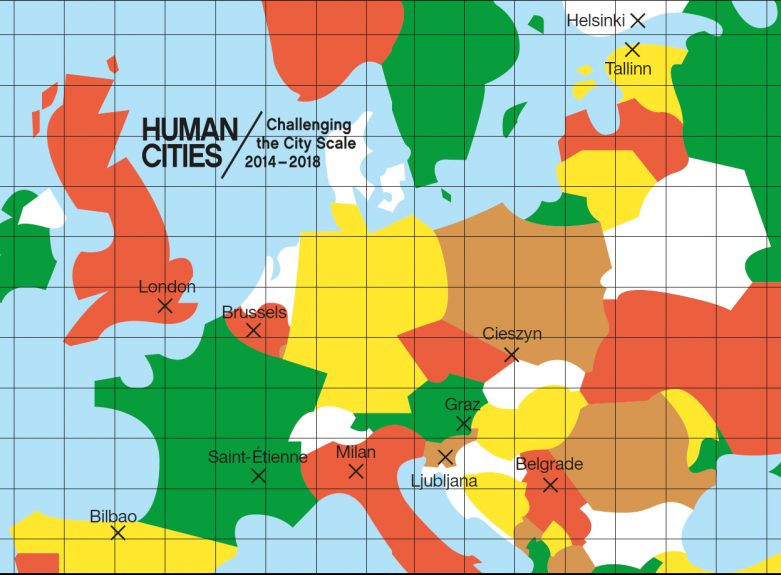
This 176 pages book is released by the famous international publisher Birkhäuser, and co-edited by Cité du design Saint-Etienne and Clear Village London, with the contributions of all the partners and invited authors. After a 1st publication oriented on research and inspirational case studies, this final book is the story of our experiences and cooperation addressed to a large audience of people interested in urban design and practices .
Since 2014, the Human Cities network has been working on Challenging the City Scale to question the urban scale and investigate cocreation in cities. The Human Cities partners have carried out urban experimentations in 11 European cities empowering citizens to rethink the spaces in which they live, work and spend their leisure time. Through conversations with people involved, the book examines how bottom-up processes and their design, tools and instruments generate new ideas to reinvent the city. It offers inspiration and insights to everyone, from practitioners and politicians to designers and active citizens, eager to try out new ways to produce more human cities together.
Our project can be seeen as a journey in people-centred design.
To prepare it, we asked Alice Holmberg, a designer and co-creation expert, to help each partner start their experiment through co-creative sessions. She explains in her article her approach to participatory design, and how she established a co-creation framework that was applied in a variety of contexts.

After the co-creative sessions, each partner departed on their own journey. For example, our partners in Saint-Étienne, Graz, Bilbao, Helsinki and London worked with citizens to turn vacant or
underused spaces into test sites for new solutions for work, service provision, education and communication. In Ljubljana, Belgrade, Cieszyn, Tallinn, Brussels and Milan, our partners joined forces with citizens to contribute to the development of a neighbourhood through improving the quality of public spaces. We invited two journalists, Côme Bastin and Fleur Weinberg, to capture the stories of the experiments in each of the 11 partner cities. These stories compose the main part of this book.

The variety of experiments allowed us to learn from each other. It also gave some hints for citizens, designers, and decision makers (insitutions and developers) which would like initiate that kind of actions. These learnings are shared in the third part of the book, written by Robin Houterman from a collective reflection led by all the partners.

We asked two urban experts to provide a context for our stories. John Thackara, a writer-philosopher, explains the importance of understanding the notion of the city “as a living system”. His chapter emphasises the need to take care of our commons, a term that includes the spaces, memories, knowledge, skills, culture and biodiversity that we all share.
Anya Sirota, founder of and architect at Akoaki, shares with us her experiences from Detroit, USA. In a context of severe urban decline, Akoaki designs architectural interventions, art objects,
and social environments that aim to make an impact far beyond their physical appearances.
As a conclusion – or an introduction to the next journeys to come – Olivier Peyricot and Josyane Franc re-question the topic of bottom-up initiatives in the global context of city making. Could active citizen be the sole driving forces of the tranformations in contemporary cities? How to collectively take responsibility and act for the global challenges facing our urban societies ?
Since its start, the Human Cities project has led to a network of “Human Citizens” distributing their knowledge and skills across Europe, and beyond as well by making use of the network of UNESCO Creative Cities of Design. By writing this book, we hope to expand this network of Human Citizens even further. We hope that by sharing our enthusiasm and experiences, the book will be an inspiration and a valuable reference for those inclined to become involved themselves. Moreover, we want to convince policy and decision makers of the value of these initiatives and inspire them to take action to facilitate them better in the future.
The experimentations in Belgrade aim to improve the liveability of public spaces in their city. In May 2016 a series of experiments will be held in collaboration with THINKtent, Mjehur na Mrezi, and Belgrade Design Week Team. Sessions will take place with experts and inhabitants in three different locations to open a discussion on Belgrade public spaces and how to improve them.
Evropski centar za kulturu i debatu GRAD – GRAD European Centre for Culture and Debate
The GRAD European Centre for Culture and Debate, also known as KC GRAD, was opened on April 16, 2009. KC GRAD is the first independent cultural institution in Serbia. It is situated in an old 1884 warehouse located in the old, neglected and rundown industrial neighbourhood in the very heart of Belgrade, on the banks of the Sava river. The KC GRAD building consists of two levels with a total surface of 397 square meters. It houses a large gallery space, office space (also for freelancers to use) and an art library on the upper floor. The Steve Austen café bar and the Gradstor art shop are located on the ground floor. All together an interdisciplinary stage is offered for a diverse program, which ranges from music events, exhibitions, debates, book presentation and lectures to an educational program of workshops and an artist in residence program. KC GRAD It is a product of a joint initiative of the NGO Cultural Front Belgrade and the Amsterdam Felix Meritis Foundation. Since its opening KC GRAD became popular place in Belgrade. It has about 8000 visitors each month which adds up to approximately 70 000 visitors per year.
The program for the Big Gallery of KC GRAD is developed on a yearly basis and contains two main activities. First is the annual exhibition program, for which artists and curators can apply through an open call. An international jury selects between ten and fifteen projects to be presented through the year. Since 2010 the Big Gallery officially got the status of ‘gallery of the city of Belgrade’, which was accompanied by some advantages, for both the gallery as the artist who present their work. Both benefit from financial support as a direct result of this status and for the artist it also gained the possibility to become a member of one of the main associations for artists in Serbia. Beside the annual program, the Big Gallery offers projects that present and support the local design scene as well as international designers. In this second category ten to twelve projects, different fairs and exhibitions are realized each year.
Outside the Big Gallery KC GRAD presented the Serbian visual art and design scenes at international fairs, with the result that since 2010 a selection of our projects and exhibitions has been presented abroad, at the Supermarket Art fair in Stockholm (twice), at the Sofia Design Week, and at the Skopje Designs week. KC GRAD is also taking part in long term projects and international projects supported by EU funds such as Culture 2007-2013 and the program Creative Europe.
Besides our own produced events, KC GRAD is also a house for other organizations from the cultural field and therefor always open for external initiatives and ideas. As a result about half of the total program are events organized by other initiators and partners.
Key-actors
The GRAD European Centre for Culture and Debate, also known as KC GRAD, was opened on April 16, 2009. It is a product of a joint initiative of the Cultural Front Belgrade and the Amsterdam Felix Meritis Foundation. KC GRAD is currently run by the Cultural Front Belgrade, which was established in December 2000 and since then has been organizing many cultural events like: festivals, exhibitions and conferences.
Secondary players and beneficiaries are all the artists and creative who directly or indirectly participated in KC GRAD’s programmes, as well as the general audience who enjoy them.
Role of Design
KC GRAD emphasises applied arts and design strongly. Many individual and group exhibitions within these disciplines are organised through the year. Often combined with workshops and lectures produced in addition to the specific exhibitions, for which respectable experts are invited.
CONTACT (of the editor)
Ljudmila Stratimirovic – Organization : Cultural Front – Email : ljudmila@gradbeograd.eu
Centar za promociju nauke – The Center for the Promotion of Science
Serbia’s Strategy for scientific and technological development 2010 to 2015 is in line with the Europe 2020 strategy with the common aim of developing an economy based on knowledge and innovation. The communication of science and technology, that is rich and engaging, stimulates the interest of young people and their creativity and potential, and makes them aware of the current issues in science by bringing them nearer to scientists and researchers.
The recently adopted Strategy, as well as the Law on Scientific and Research Activities, envisages the formation of the Centre for the Promotion of Science in partnership with the society and scientific community as a mean of investing in future development and growth. The Centre will be the first of its kind in the region of the Western Balkans.
Science centers inspire curiosity and support learning about science from early ages. In knowledge-based societies a modern science center plays a central role in the dissemination of scientific culture and the strengthening of education and research, not only for young generations, but also for adults. Science centers offer rich resources for lifelong learning, providing meeting places for citizens and the research community, supporting schools, and contribute to the cultural and economic vitality of their communities.
The Center for the Promotion of Science is an ambitious project and high priority in Serbia in the next few years. It is to be a landmark of Belgrade, a place that lives day and night, that pulses and attracts. It will be a part of lifelong education of the population of Serbia and will help boost the recruitment of talent and prepare society to meet the challenges of opportunities of new technologies. At the same time, it will be a regional attraction and will promote Belgrade as a modern and exiting European city.
Key-actors
Main promoters are the representatives of The Center for the Promotion of Science.
Beneficiaries of the initiative will be:
a) general public
• Local and regional citizens, public institutions, related institutions and organizations, international visitors
• Museum goers who will learn that the Science Center is a completely new kind of : people interested in knowledge and culture in general and more specifi c, people interested in science and technology related information
• Tourists
b) Youth Education / Kids
• School and High-School Children
• Pre-School Children
• Pre-School, School and High-School Teachers and Professors
• Educational institutions
c) Scientific Community
• Professionals in the fields of science and technology
• Scientific and technology institutions
• Media specialized in science and technology
Role of design
The Center for Promotion of Sciences in Belgrade is detached from the ground. Following the urban concept it is a building floating high above the ground. It operates on 3 levels. Firstly, on the level of the City of Belgrade it will be an optimistic sign positioned on one of the main routes of the city . Secondly for Blok 39 it will be sign, canopy and portico. Thirdly, as a building being programmed to promote sciences it (dis)plays on visions of technology and construction. The architectural language of the center will strongly be one of technology and the display of structural principles. All exterior surfaces are of simple character. A special role is given to the underside of the center, it will have mirroring qualities, able to reflect all the movement on the ground as well as the visitor who by entering the center is penetrating the reflections of the earths surface.
New Belgrade is a city of our times, a city which was invented and planned in the course of the 20th century with a decisive modernist perspective. Soleil (sun), Verdure (greenery), Espace (space) as well as functional segregation together with the rules of CIAM where main arguments of New Belgrade. Now, 60 years later, how do we read New Belgrade and how do we want to continue its construction? We decided for a few very simple spatial tools, all of them being in close discourse with the principles of modernism.
Firstly, we are opting for an elevated city detached from the ground. Only pillars and elements of circulation shall touch on the ground. We are proposing a floating city, very much in the manner of Corbusiers 5 points of architecture, buildings on pilotis giving the entire ground free. Secondly, the entire site is usable and accessible by everybody. Buildings do not block vision and movement. The terrain will be occupied with a multitude of different vegetations, exotic and local plants, waterlines, bike routes, jogging path. The functional segregation of the modernist movement is replaced by the complexity of simultaneities. Below ground a slab of parking and serving functions. The ground level is covered by a variety of vegetations and allows for a city of pedestrians.
65% of the site are green and almost all of the ground level allows for free vision.
CONTACT (of the editor)
Aleksandra Drecun – Organization : The Center for the Promotion of Science – Email : adrecun@gmail.com
Beogradska nedelja dizajna – Belgrade Design Week
http://www.belgradedesignweek.com/design-park/
Founded in 2005, as a true rarity in the world of festivals – as a non-profit NGO, Belgrade Design Week is the first festival of creative industries and modern business in Serbia and the South East European region, covering an area home to more than 100 million people from Milan to Istanbul.
For 9 years now, Belgrade Design Week has successfully forged intercultural and business connections between the global design scene, the regional creative industries and the city of Belgrade. With its concept BDW renews, within a contemporary context, the tradition of grand international festivals of culture such as Bitef, Fest and Bemus, recognizing the complete lack of the creative industries’ presentation, and adding for the first time Belgrade and Serbia to the global design map. Belgrade Design Week serves as an all year around educational platform and a meeting point for the exchange of ideas and experiences between international and national experts from all areas of design, architecture, creative industries, new media, marketing, advertising, communications, publishing and arts management.
We firmly believe that design today is much more than just a tool for the achievement of profits and economic success. We see it as a carefully crafted methodology for the introduction and realization of new ideas in the society. It is in pursuit of this goal that Belgrade Design Week, despite the situation in which in Serbia and the region there is practically no “design industry” that would justify organizing a fair, accomplishes its mission by gathering global leaders in the fields of architecture, design, branding, advertising, culture, publishing, media and communications once a year in Belgrade at its famous international conference, followed by satellite programs such as creative workshops, master-classes, exhibitions and promotions.
Key-actors
Main BDW promoters are Jovan Jelovac, the founder and creator of BDW , and Vesna Jelovac, BDW CEO who travel all year round to promote Belgrade Design Week and the Serbian creative industries, forging new connections and gathering the most important thinkers to present at the BDW conference.
Secondary players are all the BDW alumni who, in past ten tears, thanks to their invitations to BDW to hold workshops, lectures and exhibitions, made a great impact to regional South East European creative, media, academia, institutions and businesses who regard design and creative industries as added value, and who, on the other side, made new cultural and business connections in a region they almost unequivocally never had relations with before. What makes Belgrade Design Week and our creative conference so special and different is most of all the impressive participants list, which constantly grows and each year involves more and more global leaders in the creative industries. In the past five years the list of lecturers alone at our conference includes more than 400 leading creatives, artists, architects, designers, branding and advertising experts, curators, publishers, entrepreneurs, critics, in one word – “The Greatest Creative Minds of the 21st Century!”
Main beneficiaries are members of BDW’s the massive pro-European professional audience of the highest quality, composed of opinion makers and creative leaders of the whole region, all the way to medium and small enterprises, and a huge population of students from the creative faculties. The audience is composed of 50% local, 30% regional and 20% worldwide delegates and visitors, with over 15.000 attendees each year at our main festival hub alone, and an immeasurable number of spectators and followers in the city wide satellites programs and media.
Role of design
PREVENTION OF BRAINDRAIN
BDW nurtures conditions for the growth of creative jobs in society, requiring cutting edge knowledge and education, as new priority of the Serbian Government’s national strategy, like in all other smart countries affected by the crisis.
IMPULSE TO BUSINESS
BDW is promoting sectors of the creative industry which are crucial for developing of not import, as the only active sector in Serbia today, but for pushing forward innovative business start-ups and production, capable of creating a reasonable amount of new jobs.
PERMANENT EDUCATION
BDW is the only conference in the SEE region which teaches individuals, government and businesses how to adapt to changes in today’s economy, through concrete examples of productive thinking, showcased by leading global creatives, brands and corporations.
EUROPEAN VALUES
The finest European and global cultural institutions and embassies in Serbia, kindly support lectures by their countries’ leading representatives at BDW, fulfilling their quest for a promoting European values, for the benefit of Serbia and the entire region.
That’s why our motto this year was “BRAND NEW WORLD”, accurately describing what we did: We invited the world’s best designers of 2014 to Serbia, carefully selected from over 20 nations and all walks of the global creative industries, and at the same time, presented to the world the best that Serbia has to offer. For first time in history under High Patronage of the President of the Republic and the Mayor of Belgrade, we presented our complex, but laser-sharp five programs during a packed Design Week: First of all BDW’s world-famous international conference “BRAND NEW WORLD”, for the ninth time in row, which in addition to more than twenty of the creative industries’ global superstar speakers, for the first time, showed the most prominent representatives of the Serbian creative scene in three days – first, the best architects, then the best designers and finally the best communicators in 2014, in a new subprogram called “Serbian Innovation Session”. In the same time, at the BDW DizajnPark exhibition spread over three floors above the conference, the latest global and local design masters crossed paths in a firework of mutual inspiration, preceded by our cutting edge international workshops for professionals, the PKS DizajnLabs, organised with support of the Serbian Chamber of Commerce.
CONTACT (of the editor)
Vesna Jelovac – Organization : Citizen’s Association « Design Week » – Email vesna.jelovac@belgradedesignweek.com
The “GRAND CREATIVE PARK OF THE CITY OF KRAGUJEVAC” initiative is BDW’s contribution to HUMAN CITIES/ project co-funded by the Creative Europe Programme of the European Union, as part of the “100 Creative Playgrounds for the Children of Serbia” campaign.
In pursuit of “design thinking” and “participatory urbanism” in Serbia, BDW made the deliberate decision that the weakest and most vulnerable citizens of Serbia, our children, should be the first to be able to experience the rise in the quality of life through design. In 2013 BDW started a strictly non-profit, nation-wide campaign aiming to involve citizens, responsible and pro-active municipalities, as well as leading foreign and domestic companies, institutions and embassies, which would, in capacity of initiators, sponsors and partners, join their goodwill, energy and donations for the implementation of the “100 Creative Playgrounds for Children in Serbia” programme.
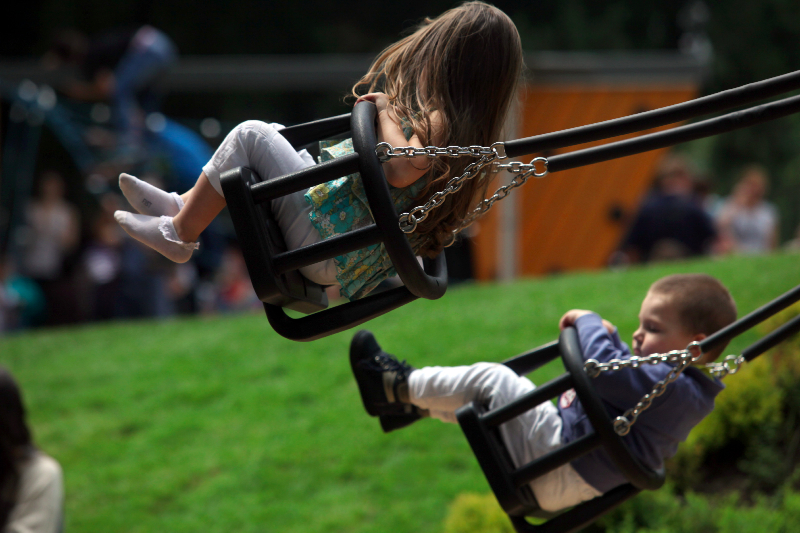
The Grand Park was traditionally a favorite promenade for all generations in the city of Kragujevac, where the dense canopy of century-old trees, walkways, benches and sports grounds represented a valuable place for relaxation and recreation. Unfortunately, in recent decades, the park has shared an inevitable fate of the general deterioration of its city. As an ecosystem, the Grand City Park is a rare urban tissue of park greenery maintained over one hundred and fifty years. The benefits of this heritage, the potential social interactions, the microclimate and emotional aspects that it generates all contribute to the general perception of this type of architecture as a focus point, around which we can gather our attention, assess our will for a better tomorrow and present it as our contribution to the urban community gathered around the pan-European Human Cities / project.
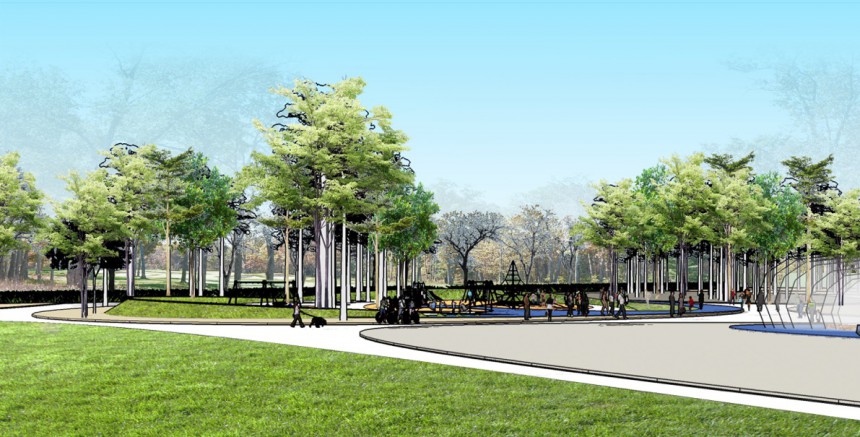
With BDW’s proposed new concept, the Grand park will be returned to the people of Kragujevac in an appropriate grand manner – so that they will be able to enjoy this beautiful urban oasis, enriched with innovative content, connected with new networks and adapted to its various target groups. The aim of the project is to further develop the citizen’s beloved park by means of participatory urbanism and cooperation with some of Serbian and world’s best practices in the field of innovation and design. They will start with designing playgrounds that provide children, youngsters and seniors with an inspiring and safe environment through a modern, active and versatile space for play, education, culture and recreation.
This is just the first step of defining a new framework of citizen’s participation about the park’s future design, with the primarily intention to provoke and activate a responsible involvement of all stakeholders into a joint search for standards of a possible development scheme for Kragujevac’s green zones. These standards define not only the principles of how to preserve and develop the park in a certain timeframe, but also new standards of how to initiate and decide matters regarding this and other valuable parts of the urban tissue.
A further objective of the project is to open up the dialogue with the citizens and inspire them to review, in a wider context, the existing urban, green and historical premises of Kragujevac, stretching from the Grand Park to Šumarice, and to try to integrate them into one uninterrupted entity, designed as a unique model of relaxation and contemplation, while at the same time creating a new cultural and historical destination for high quality tourism in Serbia’s heartland. This innovative complex would link the latest achievements of domestic and international creativity with existing rich heritage sites of the city of Kragujevac, which already include the best works of giants of creative thinking such as Vojin Bakić and Ivan Antić.

The first design and building phase of the project will be realised thanks to a donation of the Foundation “Dragica Nikolić” to the City of Kragujevac, based on research and development work co-financed by the Human Cities/ project and BDW, as part of the EU “Creative Europe” programme.
The project is implemented under the creative guidance of architect/professor Aleksandru Vuja and his architectural studio DVA, in cooperation with the team of experts from Belgrade Design Week and Brand New World from Zurich, Switzerland, as consultants, with the support of the partnering HUMAN CITIES /project.
About project development:
In 2015 and 2016, BDW has carried out a series of researches, interviews, location- and user needs- analyses of the Grand Park, as well as analyses of potentials and visions of the city of Kragujevac with its leading stakeholders, under the Experimentation phase of the HUMAN CITIES/ project. Before that, BDW presented the development of its playground in Kalemegdan, Belgrade, as the State of the art project phase. The decision to develop further the “Grand Creative Park” concept in Kragujevac was presented in Milan in April 2016 at the Politecnico di Milano session during the Salone di Mobile.
Based on the findings, the Mayor of the City of Kragujevac has now formed a dedicted task force for the implementation of the project, which includes all key city institutions from the Urban Planning Institute to public utilities companies. The first presentation of the concept to media and stakeholders was organised by the Foundation “Dragica Nikolic” in early May 2016 in Kragujevac, followed by a nation-wide media coverage.
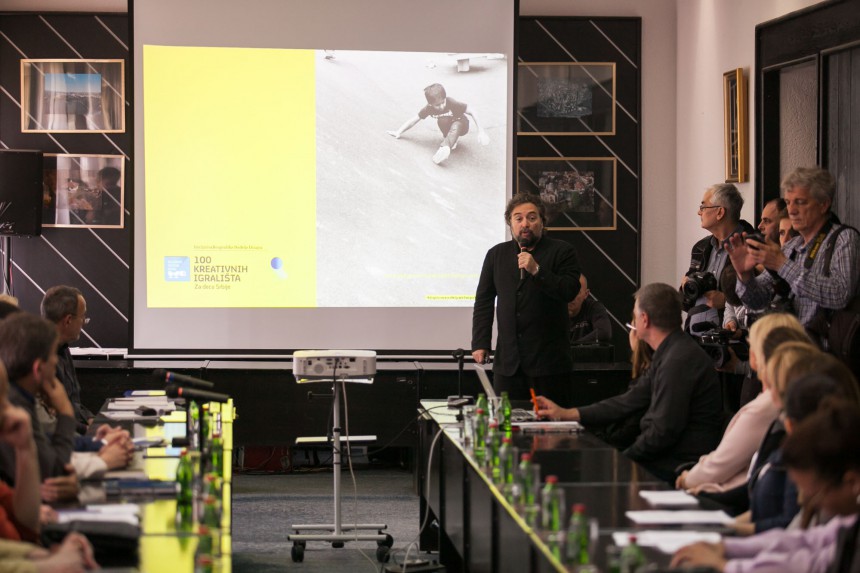
Before proceeding to the building of the new playgrounds, Belgrade Design Week will organize a final randez-vous with the parks’s target groups and professioanls with a two-day workshop on locations in and around the Grand Park, as well as the official public presentation of the concept to Kragujevac’s citizens in May 2016 at the University of Kragujevac with open access to everyone. The City of Kragujevac, the “Dragica Nikolic” Foundation and Belgrade Design Week are inviting all interested citizens, companies, institutions and professionals of good will, from Serbia and abroad, to join this non-profit initiative and help the development of a new, green, creative and cultural city of Kragujevac.
More about the conception and the process you can read here.
The City of Kragujevac invites you to share your suggestions, ideas or comments by writing to the project’s email address: velikiparkkragujevac@gmail.com
Between May and December 2015, BDW conducted surveys and analyses of the state of desolate playgrounds and city squares in Belgrade, as well as the key stakeholders of the project – from the administration of the City of Belgrade to potential investors and partners from business, academia, media and citizen’s initiatives.
In this process, BDW mobilized a team of project partners and associations such as “THINKtent” and “Bubble on the Net”, to form our own unique approach to the creation of a new approach to urban planning / URBANISM 2.0 – INVISIBLE SUPERCONNECTED NETWORKS, as well as the completion of STATE OF THE ART phase of the HUMAN CITIES / project.
A short BDW film about the STATE OF THE ARTS stage was shown in September 2015 at the London Design Festival, at a dedicated HUMAN CITIES/ session at the Limewharf, hosted by Clear Village, London.
Since the media coverage of the opening of the Kalemegdan playground in 2015 as result of our STATE OF ART phase and the HUMAN CITIES/ project, the “Dragica Nikolić” Foundation, expressing interest in the results of the project, contacted BDW with a commission to investigate the situation with public spaces in the central Serbian city of Kragujevac.
Thus, between December 2015 and April 2016, BDW’s EXPERIMENTATION phase of the HUMAN CITIES/ project went under way. BDW and associates of the project utilized the selected method of Jan Gehl Architects, mapping the needs of the citizens of Kragujevac in the context of the Grand Park’s rational usage and emotional bonds, while the Foundation in parallel raised funds for the realization of the first park section to be built – the playgrounds.
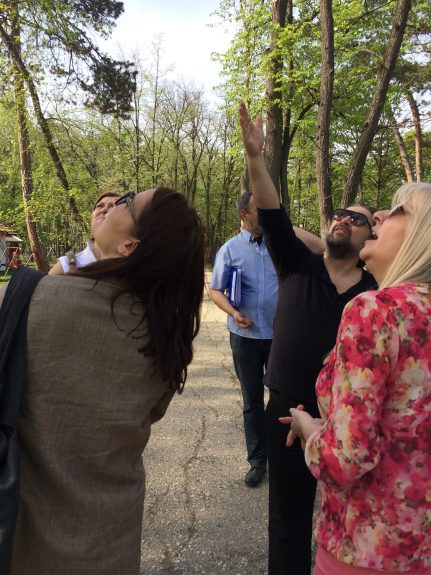
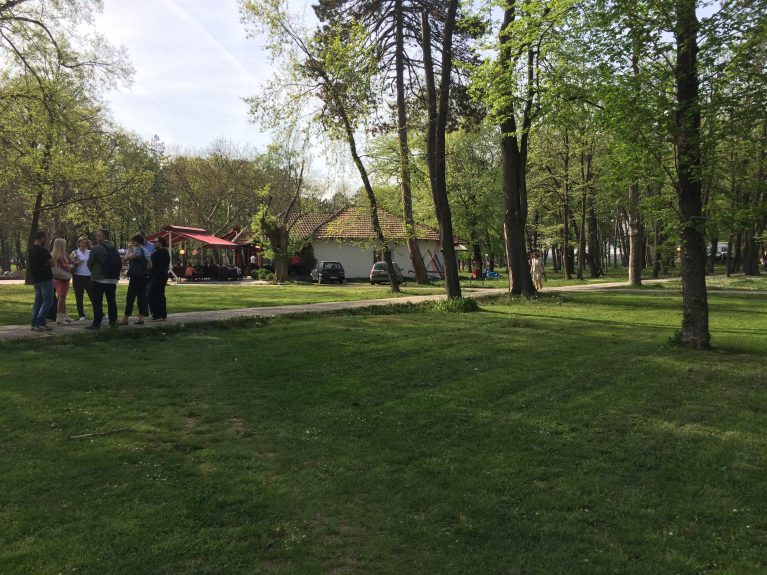
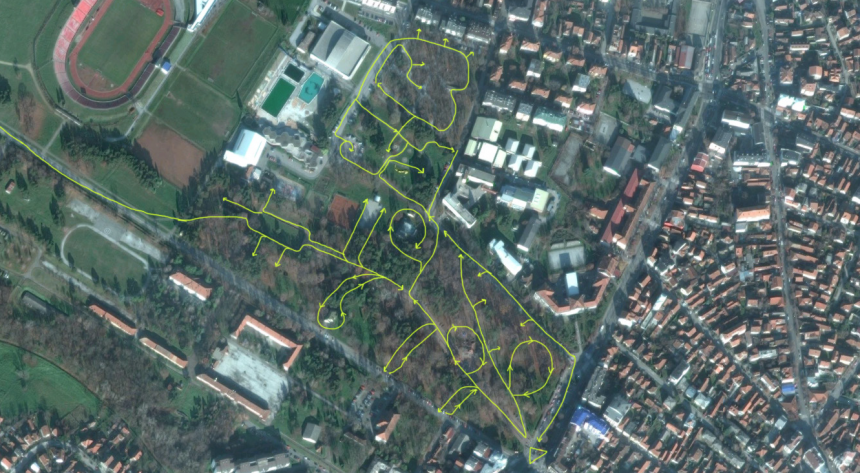
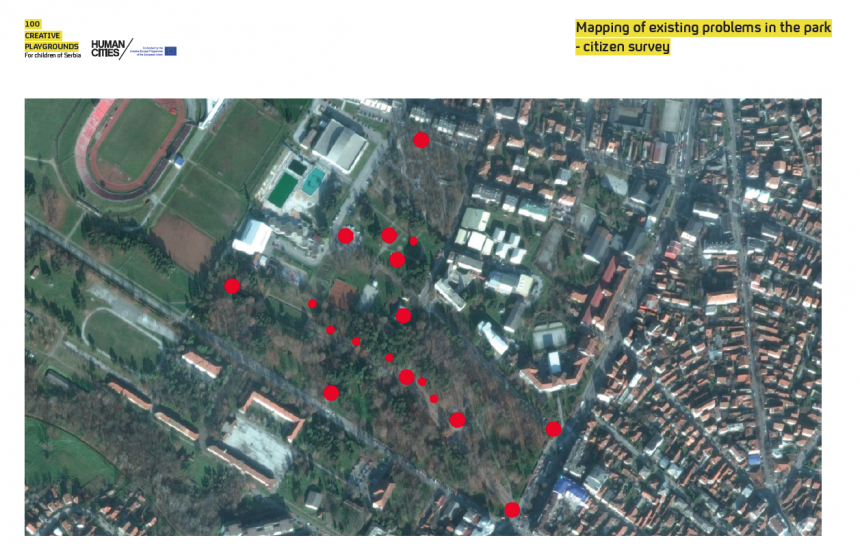
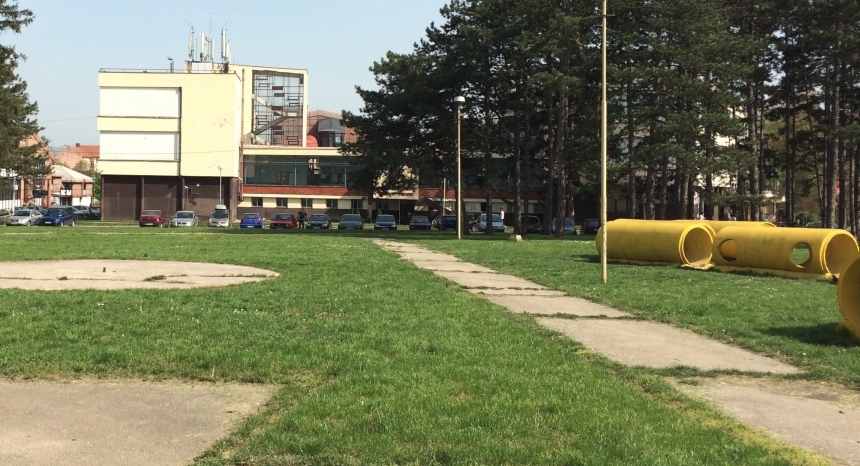
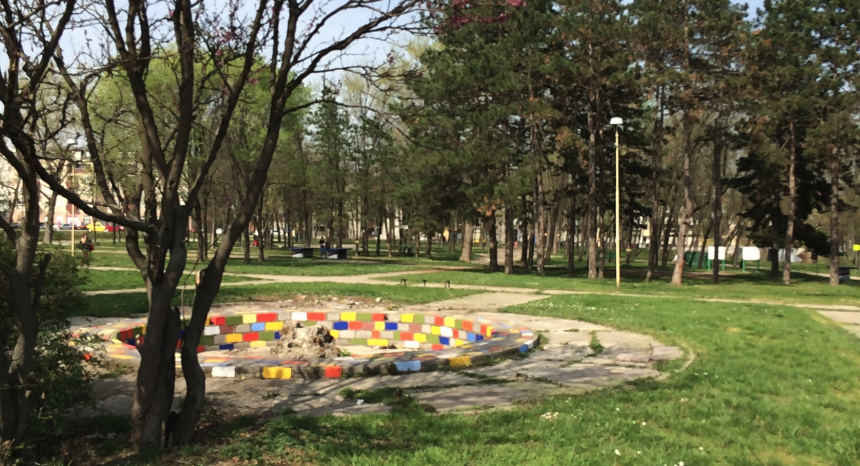
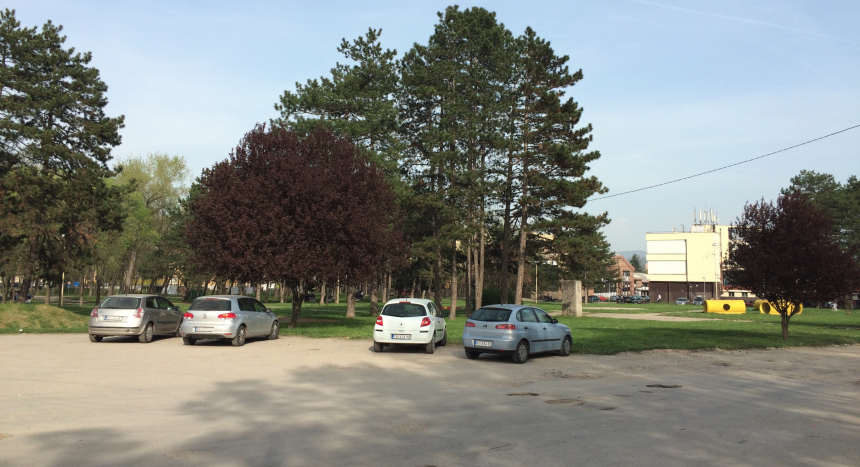
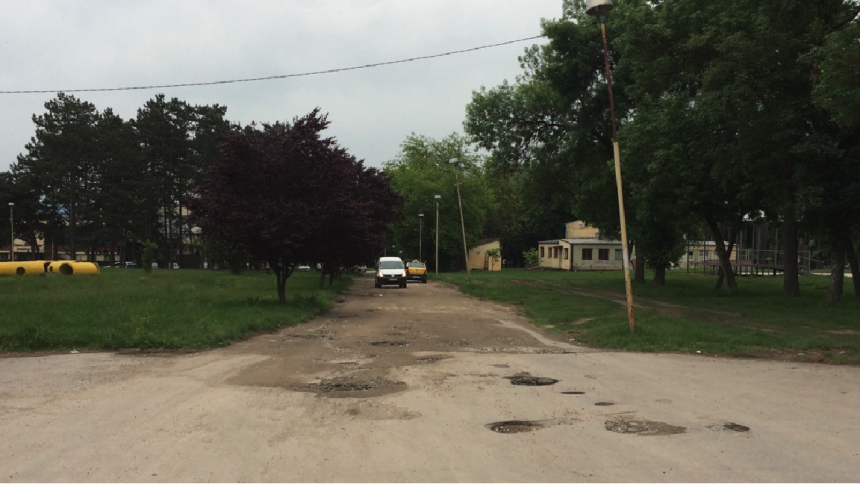
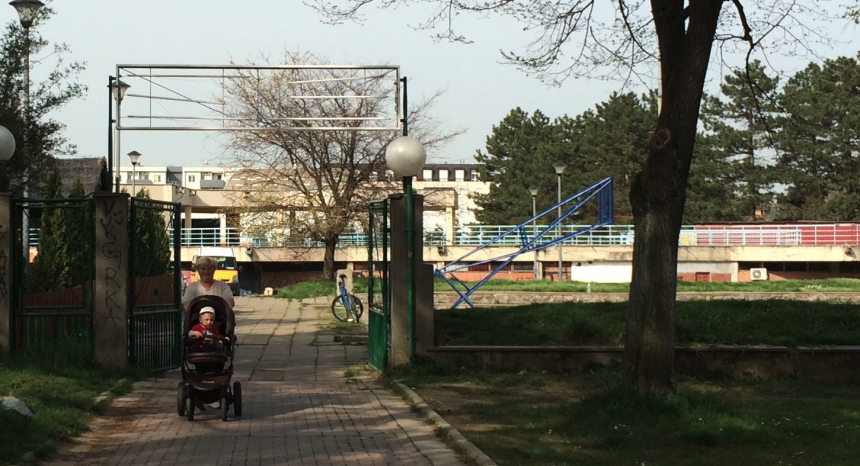
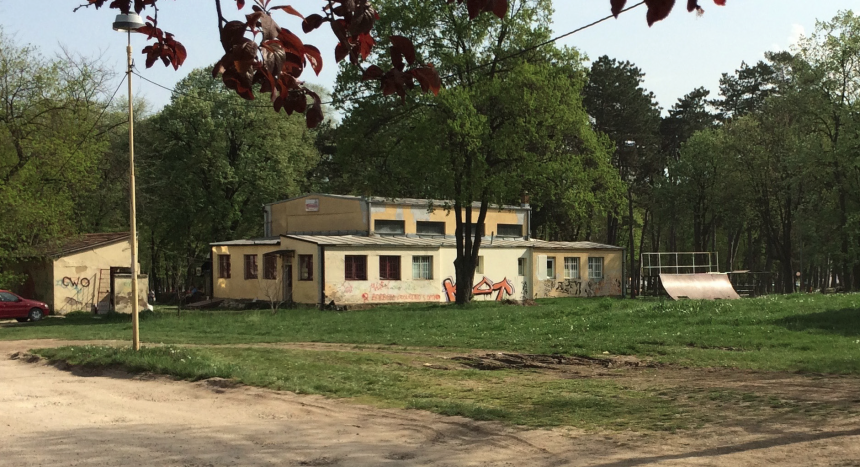
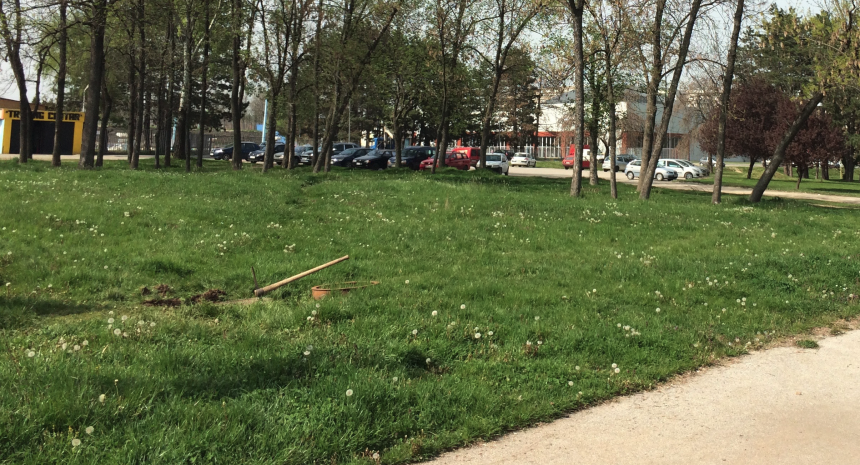
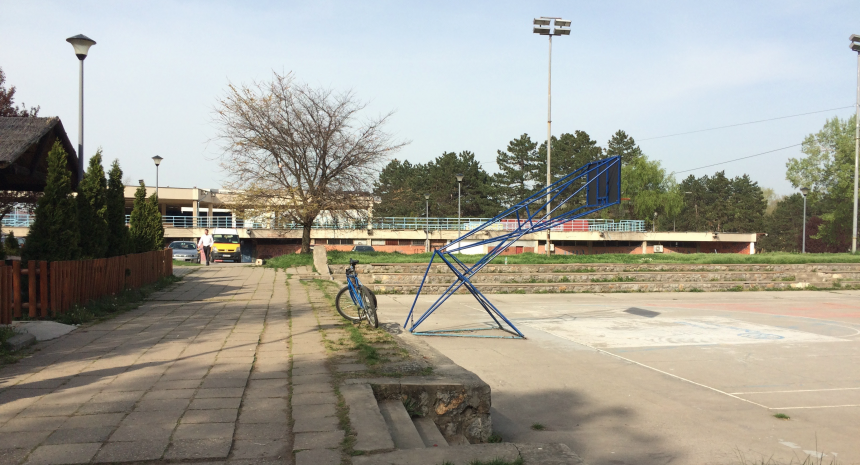
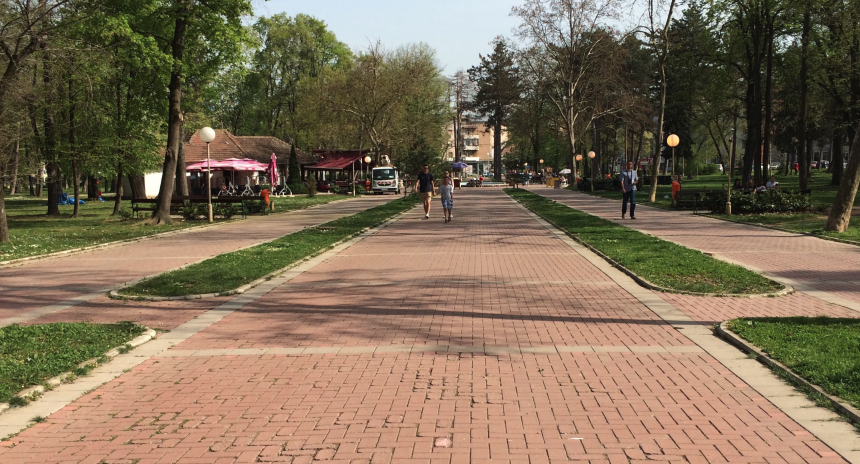
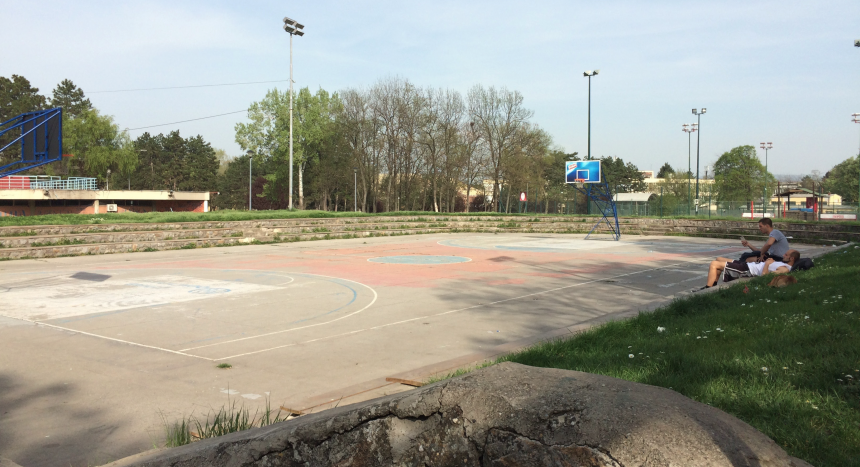
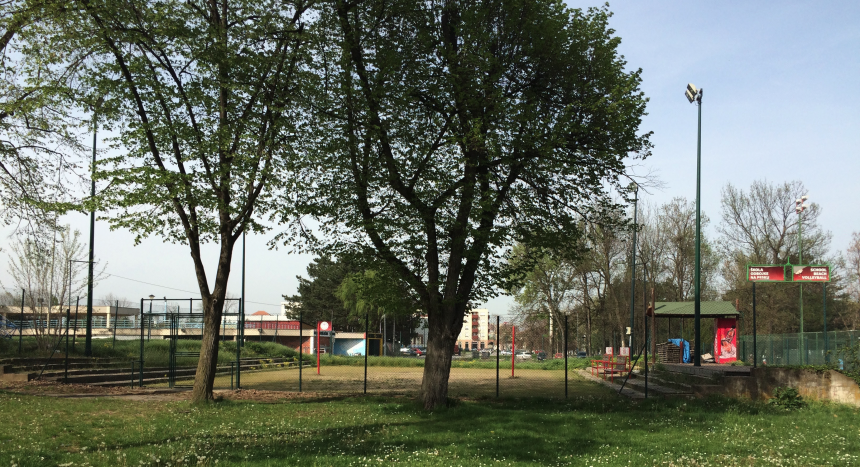

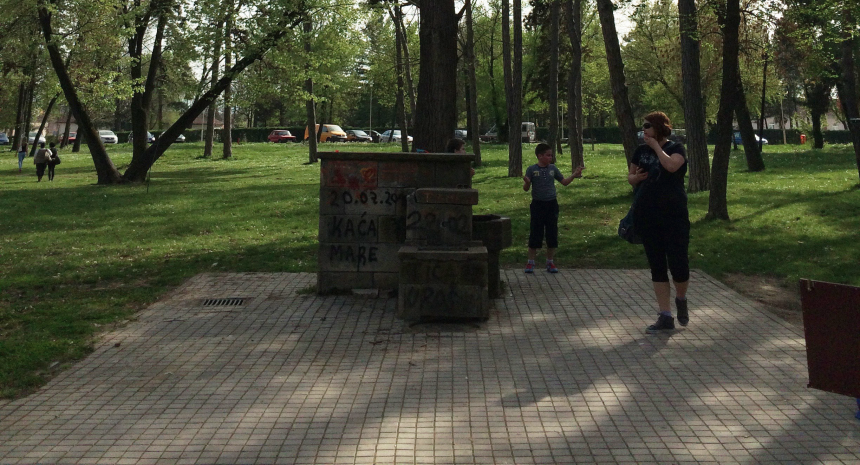
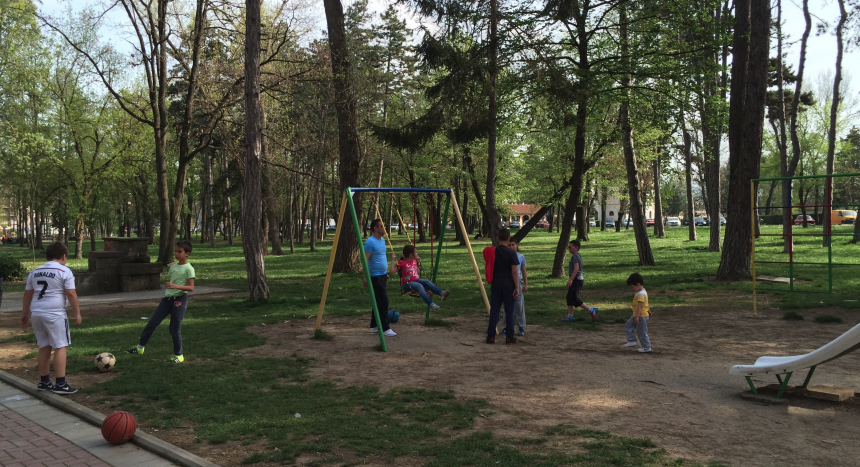
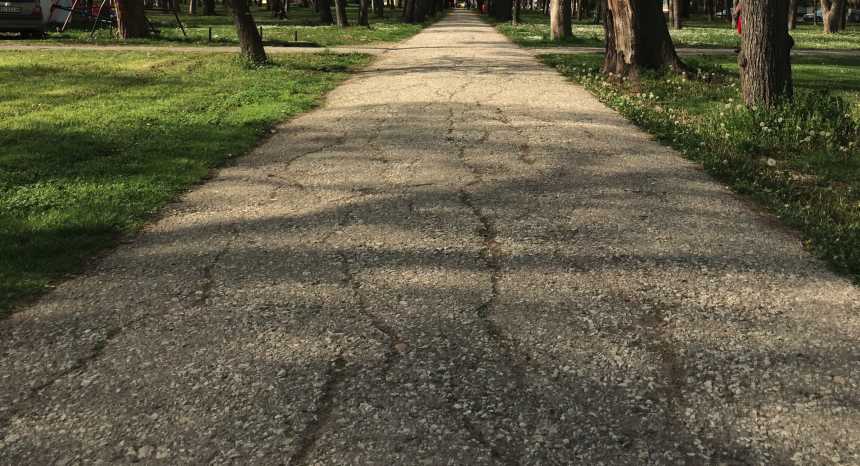
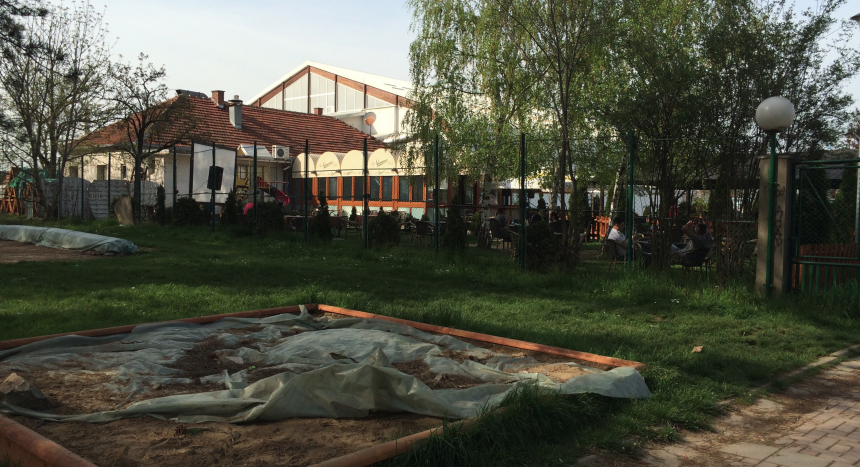
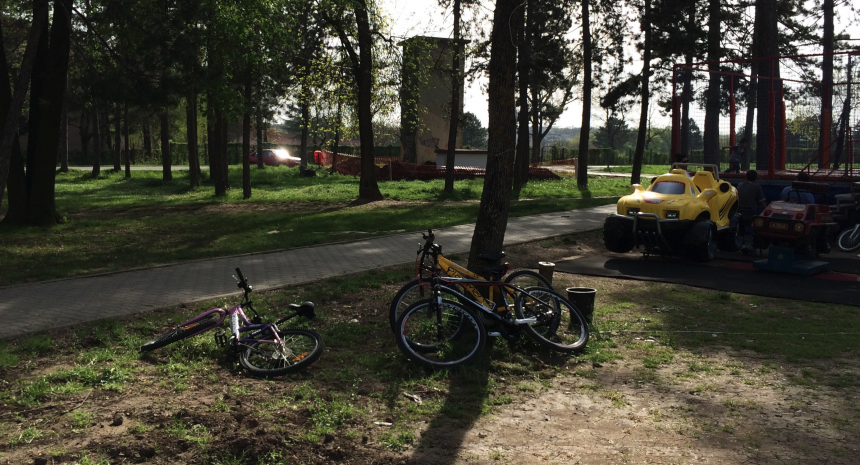
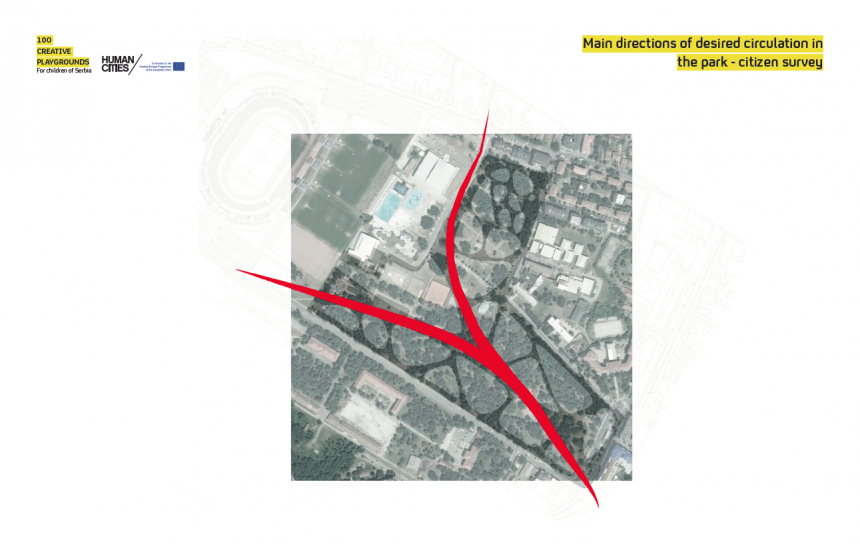

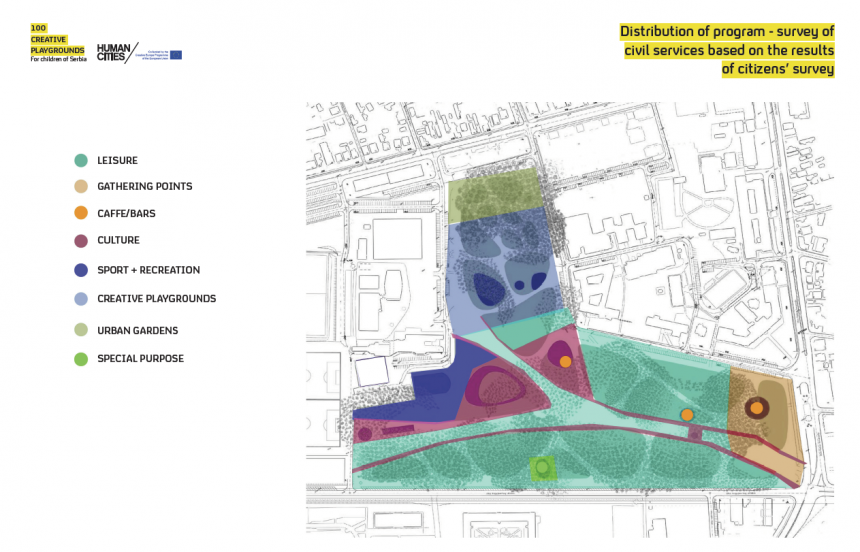
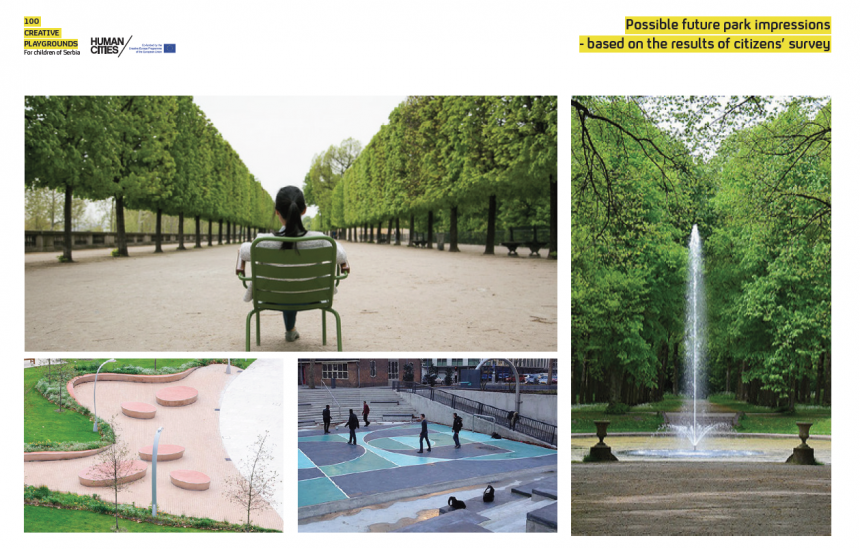
Association Design Week Belgrade (BDW) is the most important one-stop connection point between creative industries, business, government, academia and media in South East Europe, based in Belgrade, Serbia. Without hiatus since 2006, BDW organizes non-profit the region’s leading annual design festival, with its famous international conference BRAND NEW WORLD as heartpiece, which serves as educational platform and meeting point for the exchange of ideas and experiences between international, regional and national professionals and entrepreneurs from all areas of creative industries such as design, architecture, publishing, branding, advertising, communication, arts, photography, retail, education, culture management… Additionaly, BDW publishes design related movies, books, newsletters around the year, as well as an annual documentary conference feature movie. BDW’s daily TV chronicles are aired in prome time on national TV during the festival. BDW also acts as producer and partner of local and international design events such as exhibitions and workshops, roundtables, competitions etc, and is in Serbia especially renown for its nonprofit nationwide campaigns for the implementation of design thinking in everyday life, such as the “100 BDW creative playgrounds for the children of Serbia” project.
Dear Human Citizens, as the finalization of the reconstruction of the Grand creative park of the City of Kragujevac is approaching, we figured it will be useful to introduce you to the concept of participatory urbanism, that was used in the process of construction.
The relationship to the Grand Park in Kragujevac is established through the recognition of the park in terms of other major projects that form the backbone of the city’s development. The park is located next to the future large scale urban renovation zones. The future urbanization of the environment ensures that the city park, an already ambitious gesture of development of urban life in the city of Kragujevac, remains an asset in its original form of a large city park for future generations.
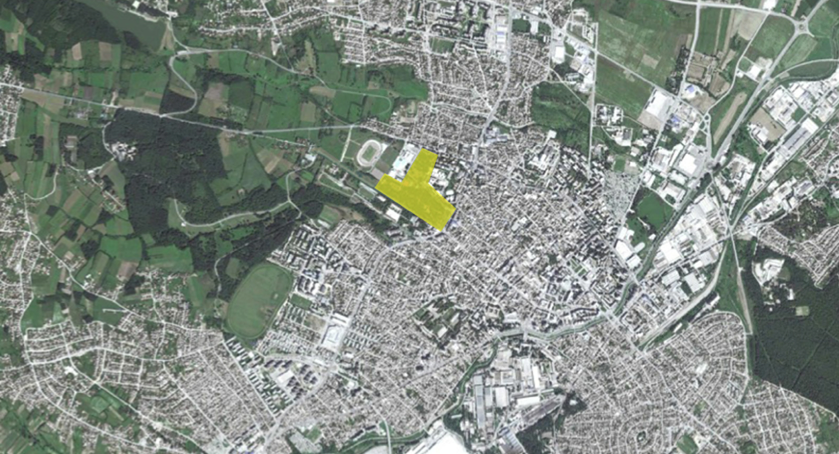
The proposal of reconstruction and development of the Grand City Park is based on new tendencies in the development of city parks. They are reflected primarily in the adaptation of the content to suit the new function of parks in urban life, as well as urban areas of affirmation of culture and social life of the community in which they exist. The Grand City Park concept has emerged from further upgrades of the original ideas of the classic park as an informal ensemble of the English park type in the late nineteenth century. The rich heritage of plants, the preserved organic entity, ambient diversity and meaningful form are considered as the primary values of the proposed concept of the new park in Kragujevac. By preserving these values of the park design concept, the proposal harmonizes the existing matrix of the park with new amenities and heterogeneous, smooth and dynamic movements through the park.
The concept of the park is a proposal of further unification of parts of the park in a clearly defined urban zone. The backbone of this zone is the existing central promenade with its correction in order to provide a more logical linking with the city flows, from the newly established recreation areas in the Šumarice park, towards the city center. The central promenade is up- graded with a perimeter pedestrian flow to the sports center and it connects the central northern part of the park into a single entity. The concept proposes clear boundaries of the park, not so much as regulation lines, but as the boundaries of shapes and forms of the future park, and a future in which the park is recognized as a separate entity and as a unique urban zone. The boundary is an area of low and high vegetation around the perimeter of the park throughout the entire zone. This clearly demarcates the material zone of the park from the urban neighborhood. The material composition of the park is simple: the existing green fund, foot- paths of small stone aggregate and diverse smaller plants and cultures.
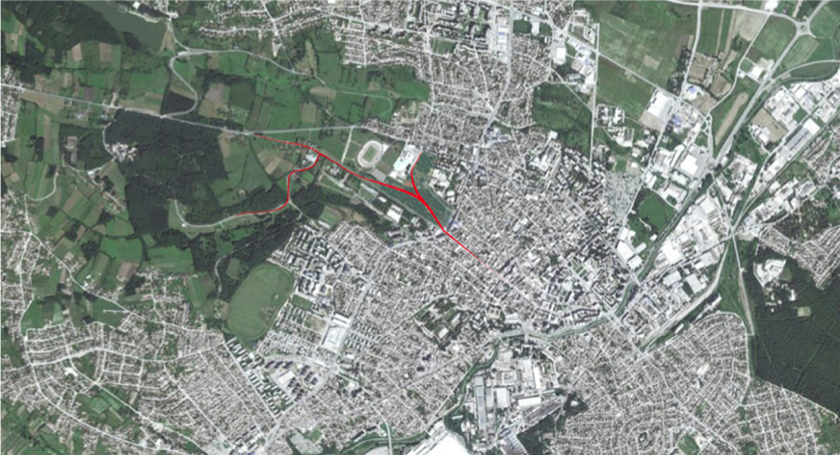
The zoning of the Great City Park analyzes several distinct parts: The entrance plateau at the site of the current entrance to the park has been expanded and is set as a mixture of the existing tall vegetation park and a paved square. The proximity of the urban fabric of the city suggests a dynamic urban zone of assembly and socializing amended with a possible exhibition pavilion at the site of the conical park elevation. With this expansion, the building of the Faculty of Natural Sciences with its park-side entrance, becomes the subject of scenography of a wider entrance plateau along the Radoja Domanovića street. In the background of this zone, inside the park, the reconstruction of the existing fountain and the construction of a micro-catering facility are proposed.
For the central section of the park, the proposal includes the correction of primary pedestrian movement in the form of a large arched promenade that connects, in a more natural way, long pedestrian flows through the city. Around the park walkways branches out a section with low and high vegetation, which highlights the smooth arc of the terrain and the architecture of the long stems and tall treetops of black and white pine trees. This impressive park composition provides the ability to form deep and layered perspectives and plains reaching the limits of the park. The promenade through the center of the park proposes a wide path, which allows its size to be used not only as a walkway for pedestrians and cyclists, but as a space for various daytime or night time events. The open-air museum dedicated to the history of the city, set on platforms of modern technology, could be the binding cultural con- tent for the main park path.
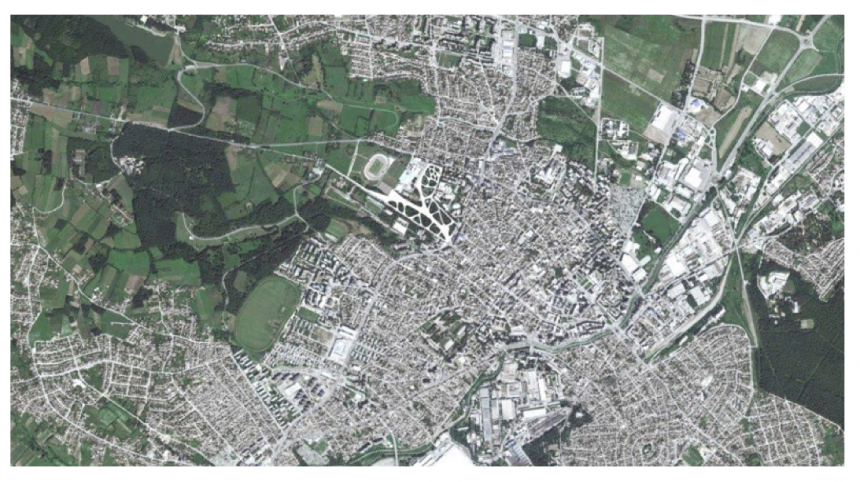
The main walkway branches out towards the sports center and to the northern section of the park. A large park square is proposed to be built at the intersection of these paths and the culture zone, which consists of two buildings: one is the “Radnički” boxing club building, which could be reconstructed into the main park pavilion either as a faithful adaptation, or as a new exhibition and hospitality pavilion with the long tradition of sports history; certainly with the inclusion of public toilets. The other building is a parterre park-style solution of a small city stage, equipped for day and night use. At this point, the view towards the northern part of the park opens up through the large sunny grassy meadow towards the activity zone for children, teenagers and the elderly. An initiative has already been taken for the reconstruction of the original floor and the small amphitheater of the basketball court.
The park walkways consist of a special zone of foamy shapes and contours. The matrix of this movement is simple and consists of natural pedestrian flows that connect all parts of the park with the main intersections and pedestrian crossings. The size of all walking paths has been deliberately enhanced in the proposed concept in order to demonstrate more clearly the basic logic of flows through the park as a grid of curved lines. This spongy matrix allows the harmonization of investments, movement and, most importantly, the preservation of the entire green fund of the park, with significant emphasis on special natural micro-units.
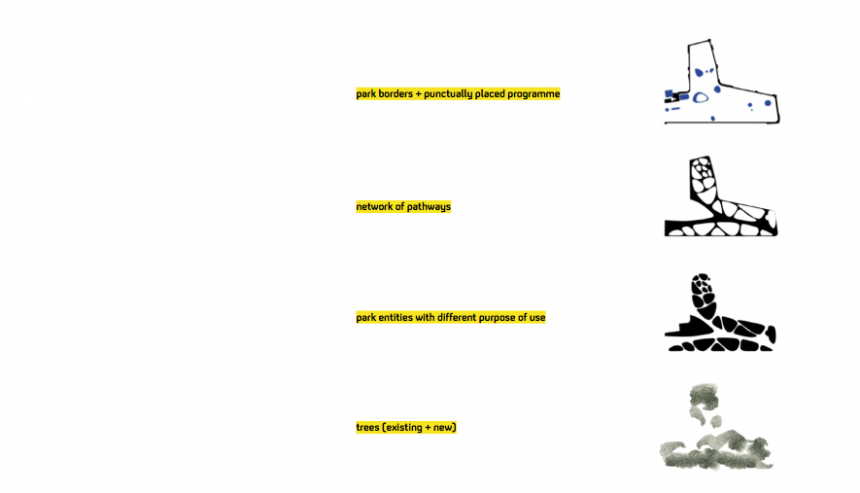
The zone with the park picnic area is located between the central and northern sections of the park. It is the largest zone and it is equipped with park furniture and units that provide, in an organized manner, opportunities for urban use of nature and is intended for major outdoor events and gatherings. Areas designated for children, teenagers and elderly people is divided into three smaller sections assembled into one whole. This contemporary concept of the beneficiality of interaction in learning between different generations gathered together is located in the shade around smaller and safe coniferous plantations. The concept proposition also discusses potential difficulties in maintaining the water sensations in the park and as a replacement for this zone suggests the use of more modest water facilities in the form of water vapor emissions.
The northern section of the park has maintained the existing modes of movement between the old routes that include elements of driver training and traffic rules facilities, but it is also complemented with two new facilities. One consists of the formation of urban gardening plantations as a trend of the new vision of the culture of urban resource usage. Other activities are related to the equipment intended for use by the local communities and students of the University of Kragujevac.

As the Grand Park is also a nighttime sensation of the city of Kragujevac, this concept proposal includes specific night light facilities for illuminating two park zones. It is a discrete and minimal form of lighting at ground level combined with occasional illumination of treetops. With joint illumination of these facilities, the park would be only minimally illuminated with necessary emphasis on the park boundaries, in order to emphasize its size, ending with façade lights around the park: from military facilities along the Kragujevačkog Oktobra street, through the Sports Center and the Faculty of Natural Sciences building.
As an ecosystem, the Park is a rare urban tissue of park greenery maintained over one hundred years. The benefits of this heritage, the potential social interactions, the microclimate and emotional aspects that it generates, all contribute to the general perception of this type of architecture as a focus point, around which we can gather our attention, assess our will for a better tomorrow and present it as our contribution to the urban community gathered around the pan-European Human Cities/ project.
100 BDW Kreativnih igrališta za decu Srbije – 100 BDW Creative Playgrounds for the children of Serbia
http://playgrounds.belgradedesignweek.com
The project “100 Creative BDW Playgrounds for the Children of Serbia” is a unique initiative, which aims to set up a broad platform for solving this important issue. In Serbia, there are other individual initiatives that deal with this problem, but it is necessary to increase the synergy between the public, private and NGO sectors, in order to fundamentally solve this problem. By linking these three sectors through the implementation of the project, we would create a better environment for growth and development of children aged one to twelve years. Municipalities would receive a donation in the form of playground design and project, as well as the purchase of required equipment. The municipalities would be required provide and prepare the location by applying Good governance principles and to commit to schedule funds in the budget for maintenance of playgrounds, and the donor would demonstrate its social responsibility by giving the donation and purchasing the required equipment for playgrounds.
In all municipalities in Serbia, most playgrounds are deserted and devastated, which is a bad environment for proper growth and development of children. The lack of playgrounds narrows the space for play and children’s physical activity, which has an adverse effect on their development, and thus on the development of the community. There is also the issue of existing functional playgrounds, which are one-dimensional and uniform. All the playgrounds are being built on the same principle, toys being installed on a flat surface, without a clear analysis that would show the extent of risk during playtime. Also, existing toys are not labeled according to age they are provided for, which is contrary to EU standards, and often the toys that are used do not have required quality and safety certificates.
Key-actors
Main promoter of the initiative is Belgrade Design Week.
Our vision for the “100 Creative BDW Playgrounds for Children of Serbia” project stems from the basic vision and mission to apply design-thinking in all aspects of our daily needs as society – in this case in creating playgrounds for children which are safer and more beautiful for playing. Equally important, to introduce design to children from the early childhood, which has a function to improve motor skills, follow up children’s needs and develop their creativity through game. Our vision is to produce 100 of these playgrounds in Serbia, designed and manufactured according to highest European standards.
The project “100 Creative BDW Playgrounds for Children of Serbia” promotes Common objectives of the European Union (The Lisbon Agenda 2020):
– The whole society is constantly learning (lifelong learning);
– Increasing quality and efficiency of education and training;
– Promoting equity, social cohesion and civic activism;
– Support creativity and invention at all levels of education.
Secondary players are the strategic partners of the projects: The City of Belgrade, Municipality Stari Grad and other municipalities, Secretary office for communal and residential works of Belgrade, Greenery Belgrade, Embassy of Finland in Serbia, Lappset and companies that supported it: Property Development Ltd., NIS a.d. Novi Sad, UŠĆE Shopping Center d.o.o.
Beneficiaries are the children from 2 to twelve and their parents who enjoy the new playgrounds all over Serbia.
Role of design
Our vision for the “100 Creative BDW Playgrounds for Children of Serbia” project stems from the basic vision and mission to apply design-thinking in all aspects of our daily needs as society – in this case in creating playgrounds for children which are safer and more beautiful for playing. Equally important, to introduce design to children from the early childhood, which has a function to improve motor skills, follow up children’s needs and develop their creativity through game. Our vision is to produce 100 of these playgrounds in Serbia, designed and manufactured according to highest European standards.
Through implementation of the project “100 Creative Playgrounds for the Children of Serbia” we will enable the promotion of functional application of design. Through the implementation of the competition and selection of the best concept designs for each of the 100 playgrounds, we will enable greater visibility of Serbian design and architecture, and especially the practical application of design in everyday life. Each of the 100 playgrounds that we build will have unique design, in order to fit the designated location.
Creative playgrounds are built on different principles, each playground is designed and adapted to the site on which it is located, so that the surface is often not flat, but instead adapted to the installation of each toy, in order to maximize children’s safety. Also, all the toys that are installed have the required certificates and clearly indicate the age of children they are suitable for. Creative playgrounds are designed and built to fulfill their educational role, so that the game playing can stimulate children’s development. Local governments are responsible for the construction and maintenance of these playgrounds, namely, the public utilities and housing companies founded by local governments. The local governments cite lack of funding in the budget as the main reason for the lack of involvement in solving this problem. Therefore, it is necessary to improve the efficiency of the relevant companies and local governments through the use of principles of good governance and intensify cooperation between the public, private and NGO sectors.
CONTACT (of the editor)
Vesna Jelovac – Organization : Citizen Association Design Week – Email : vesna.jelovac@belgradedesignweek.com